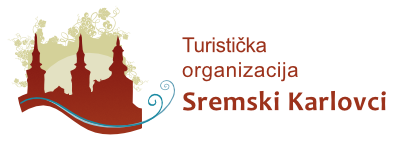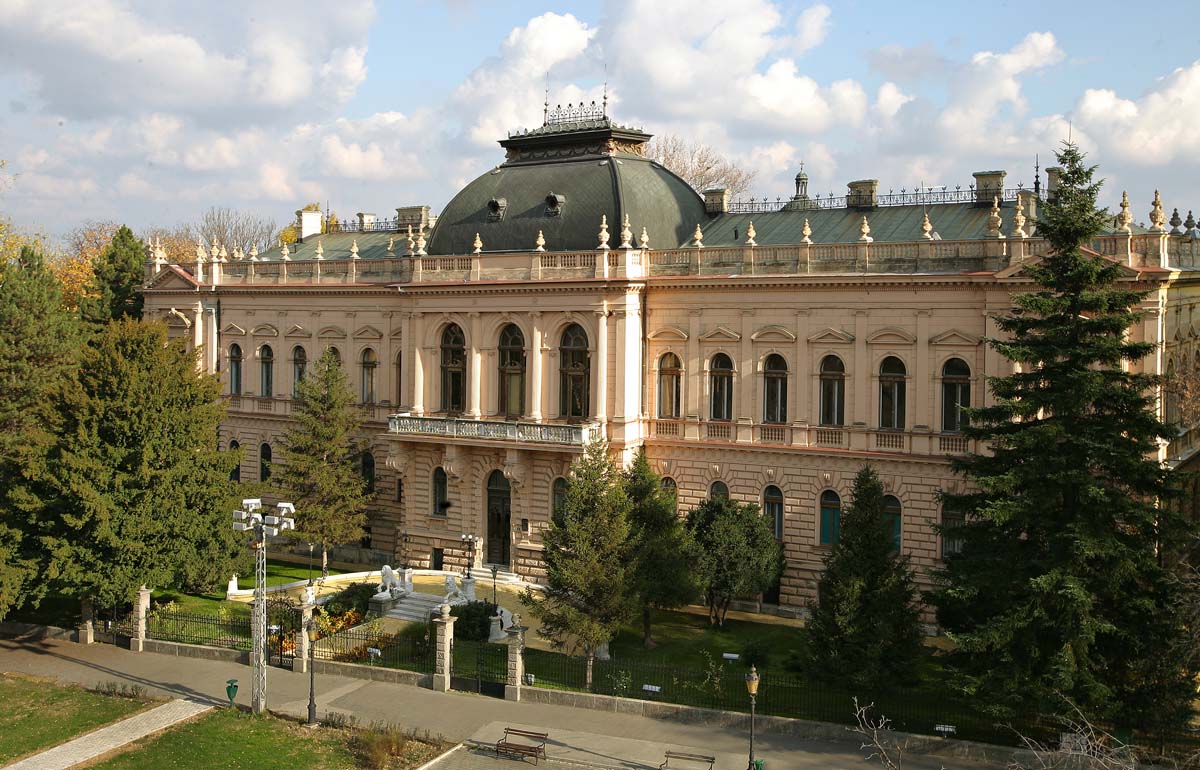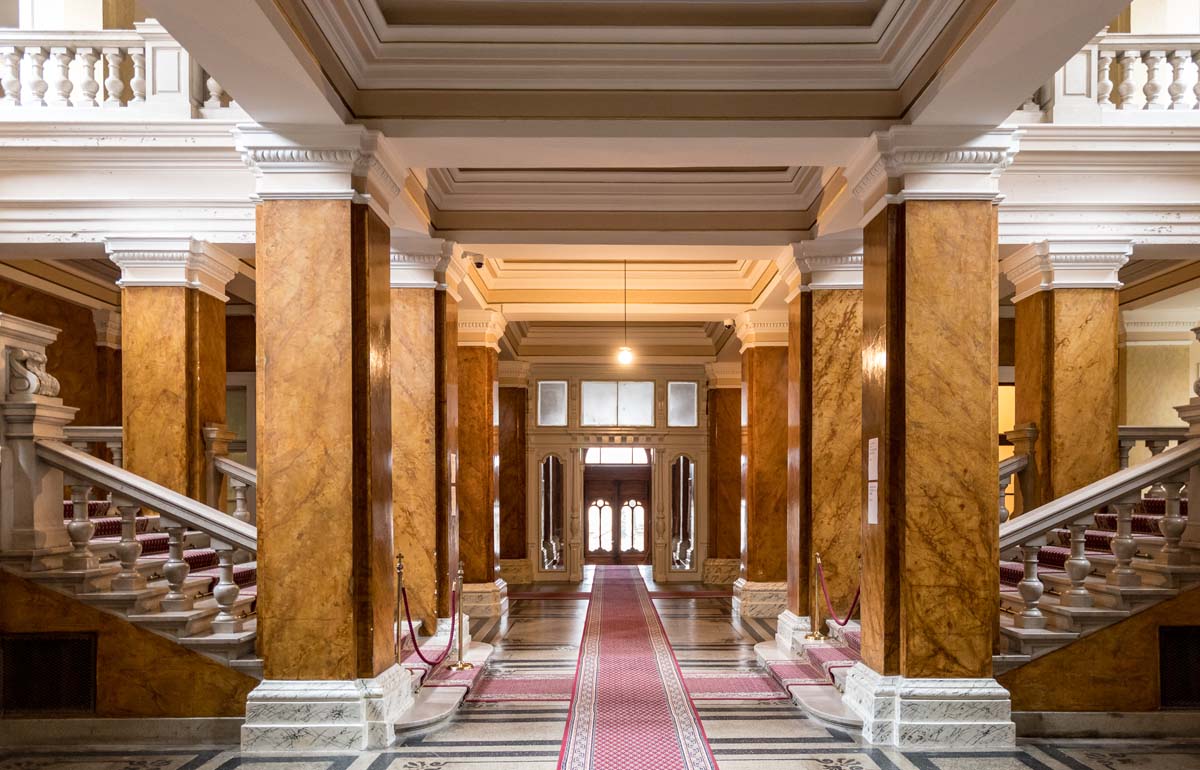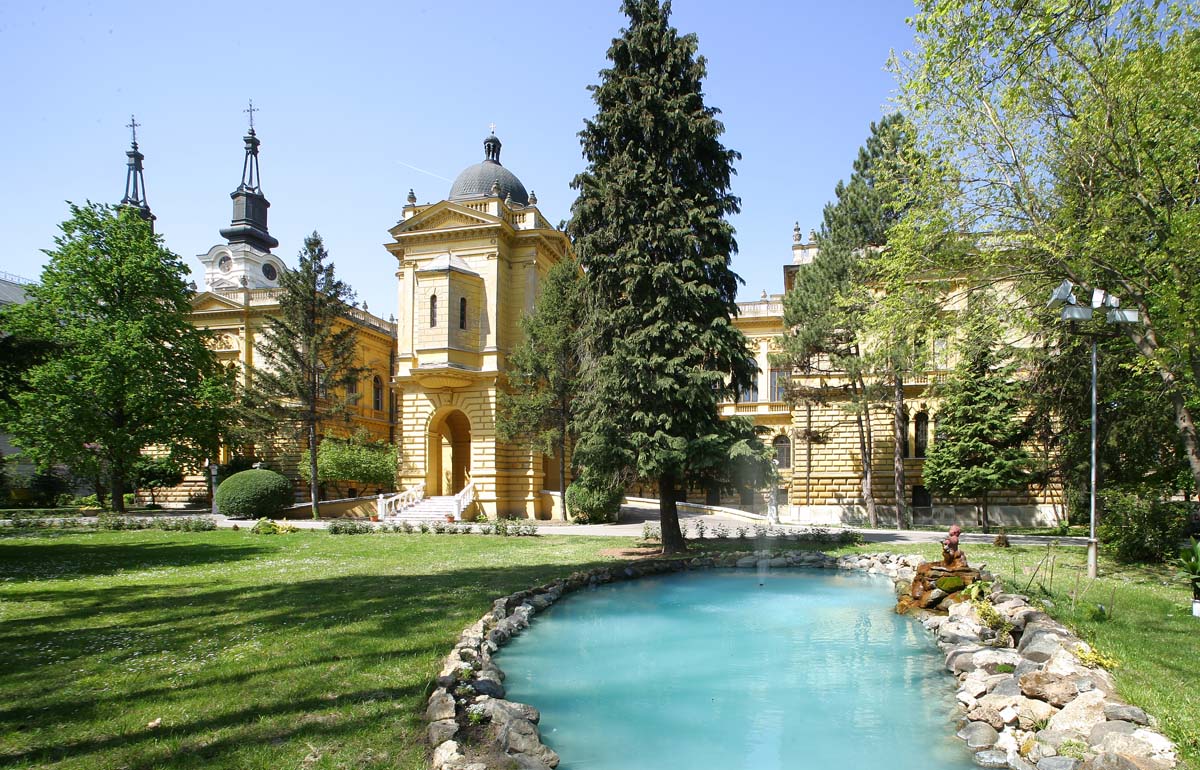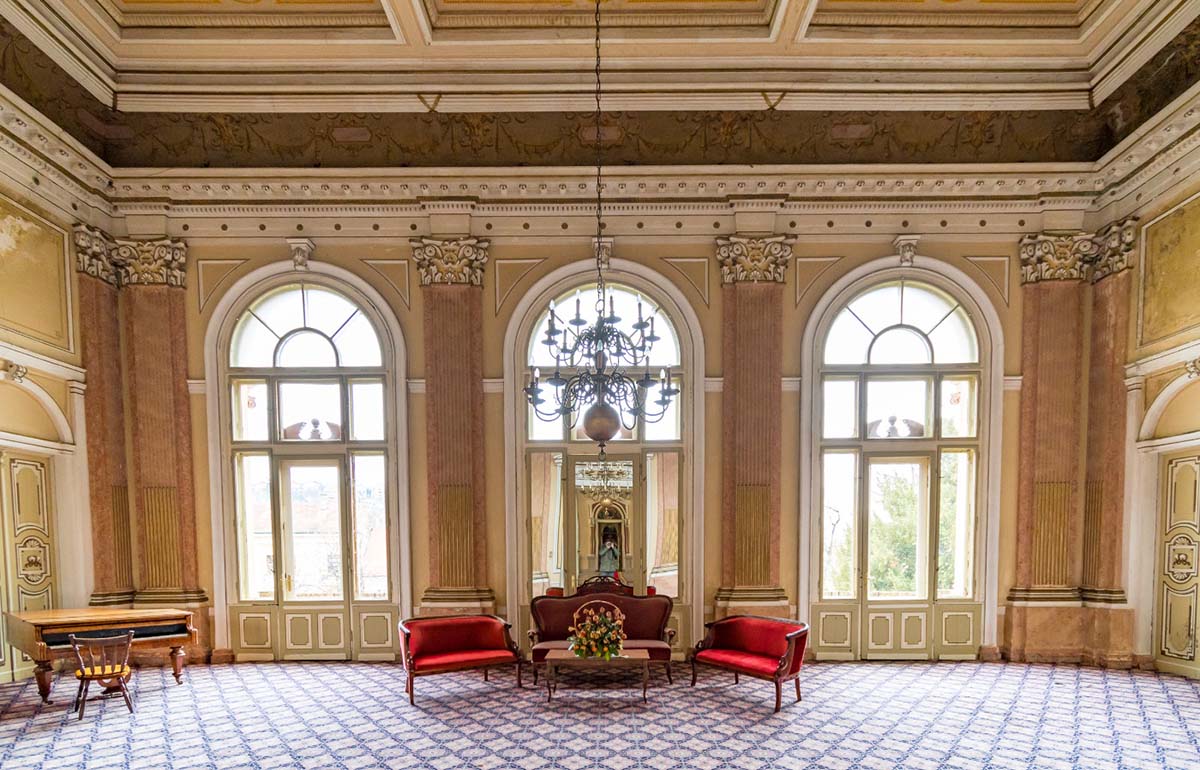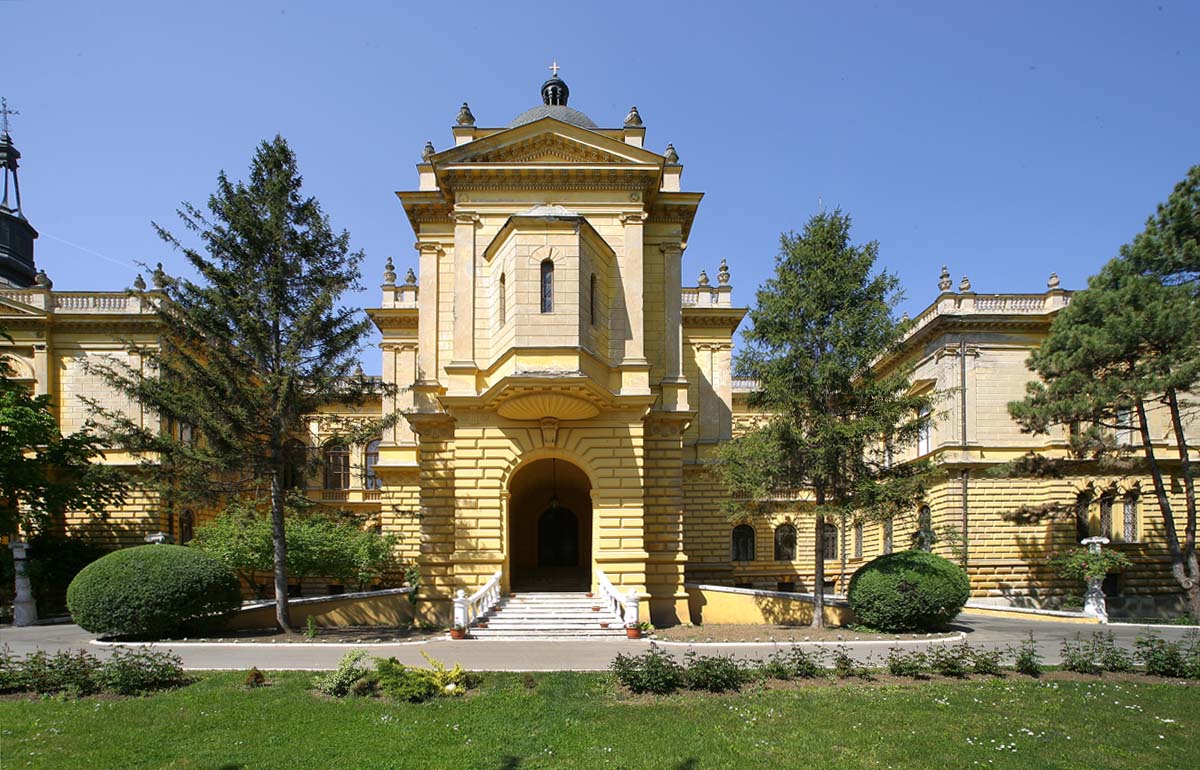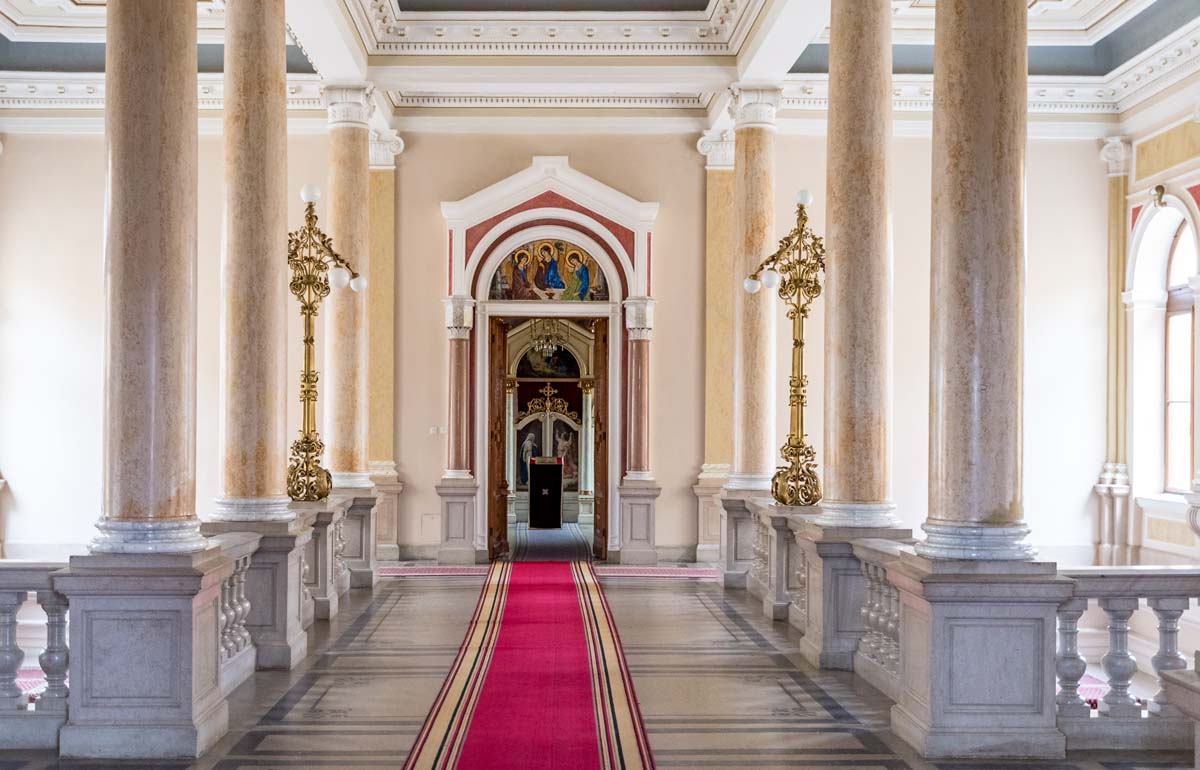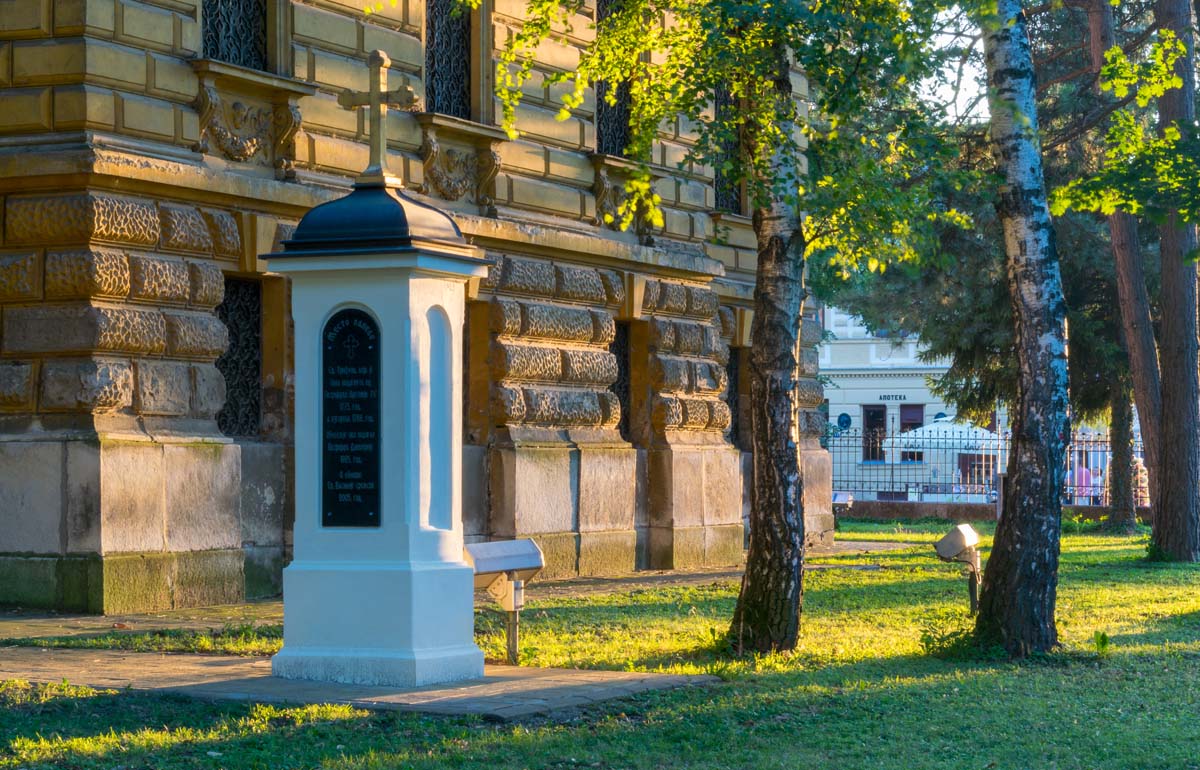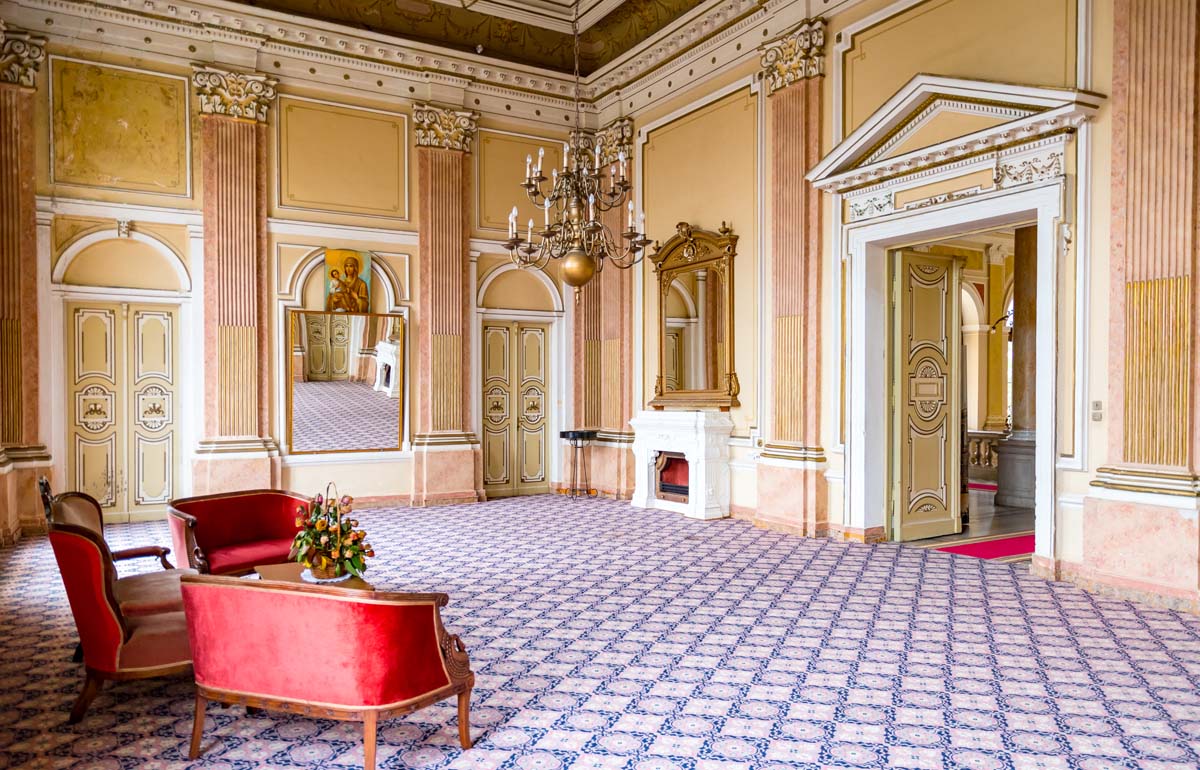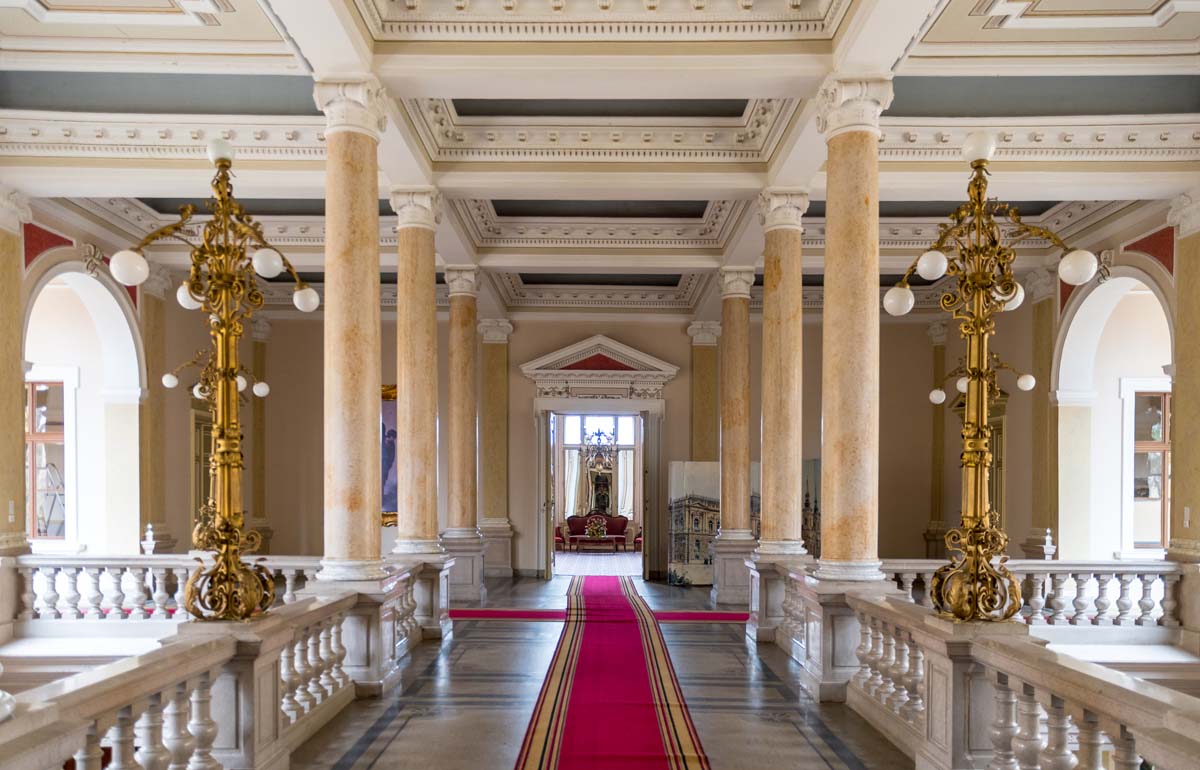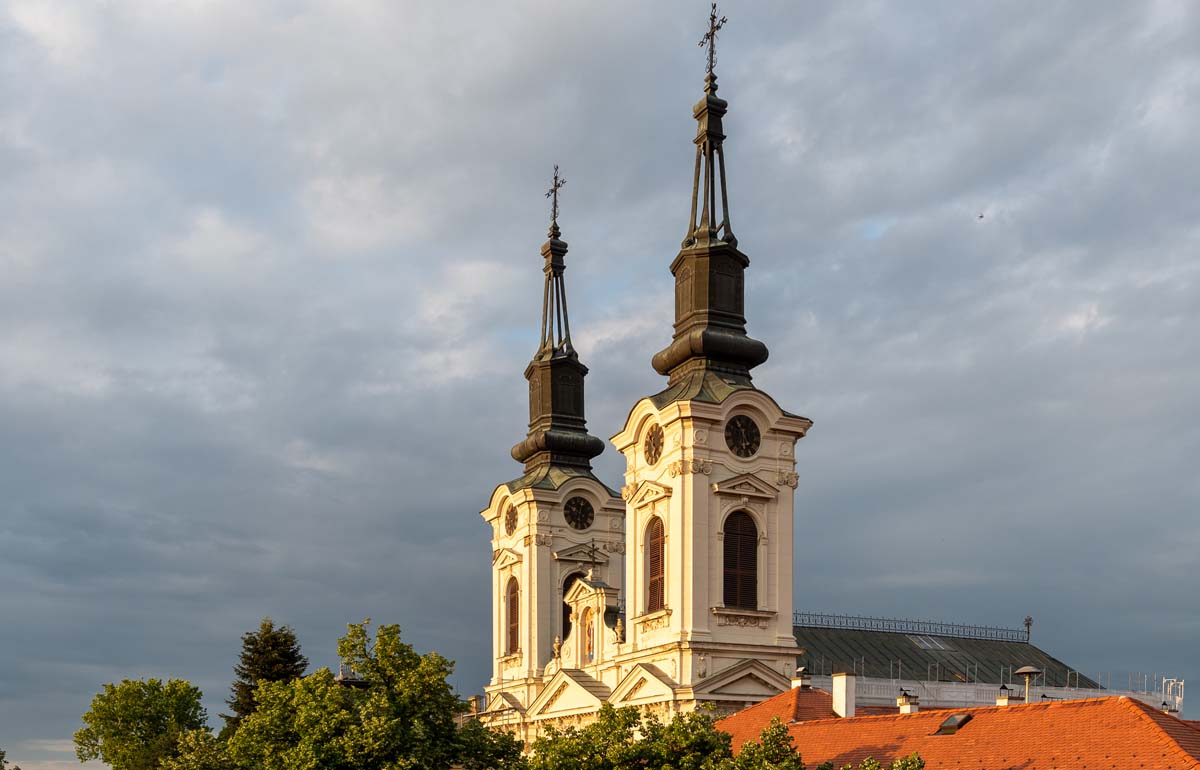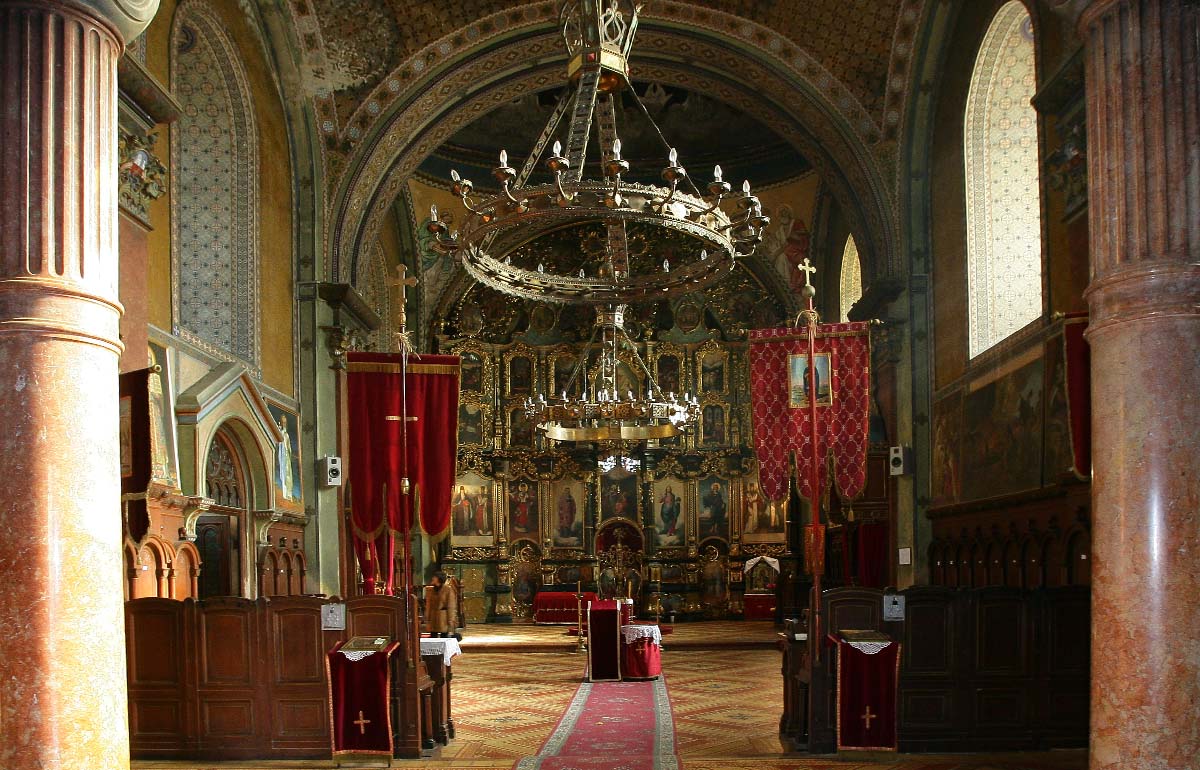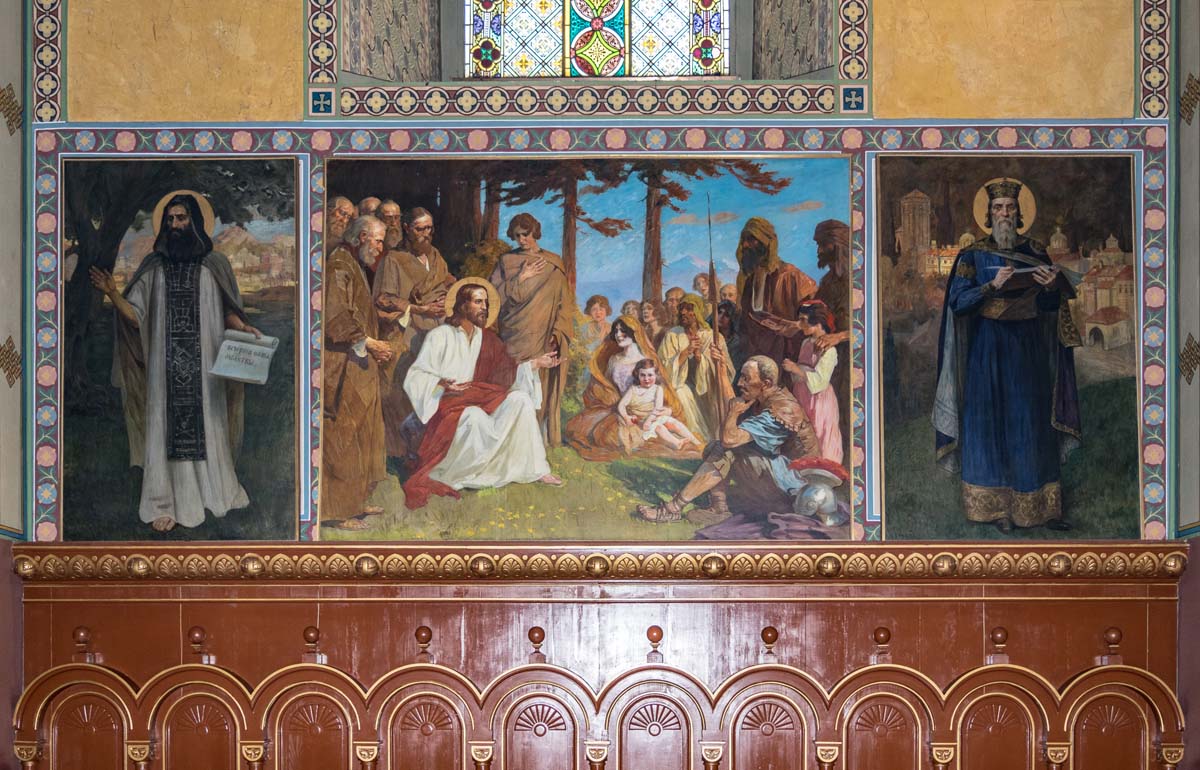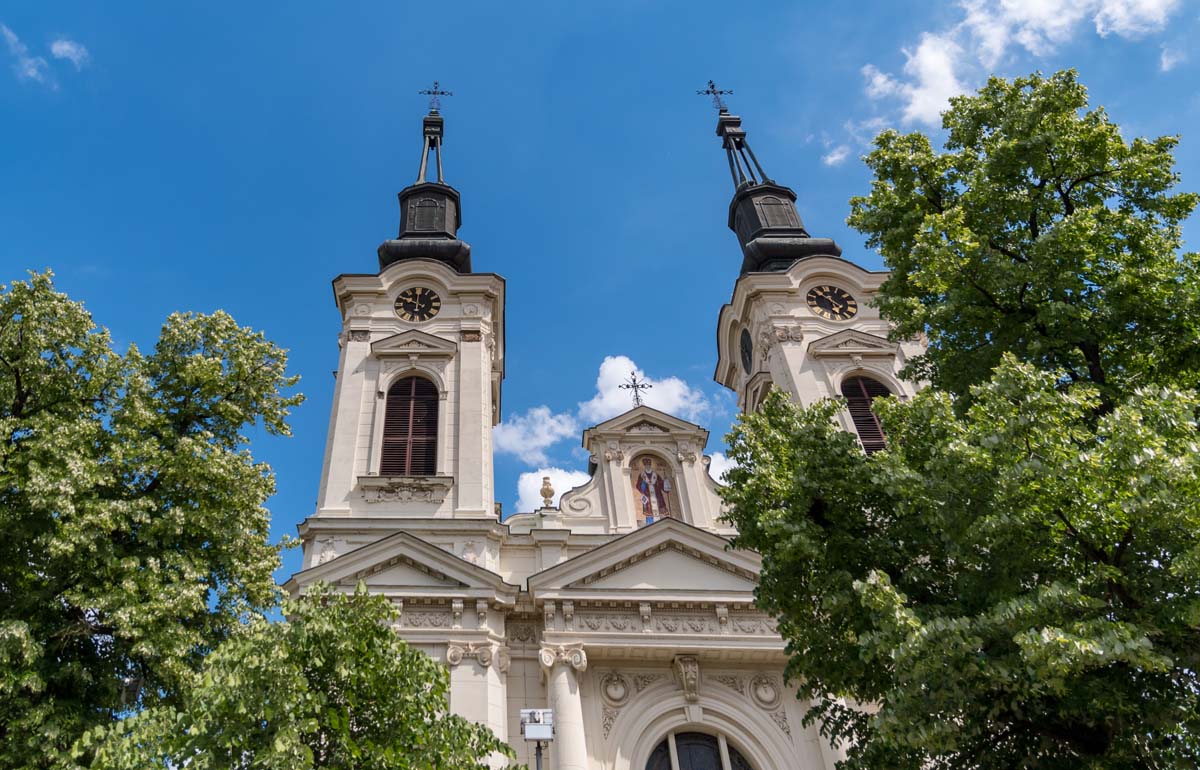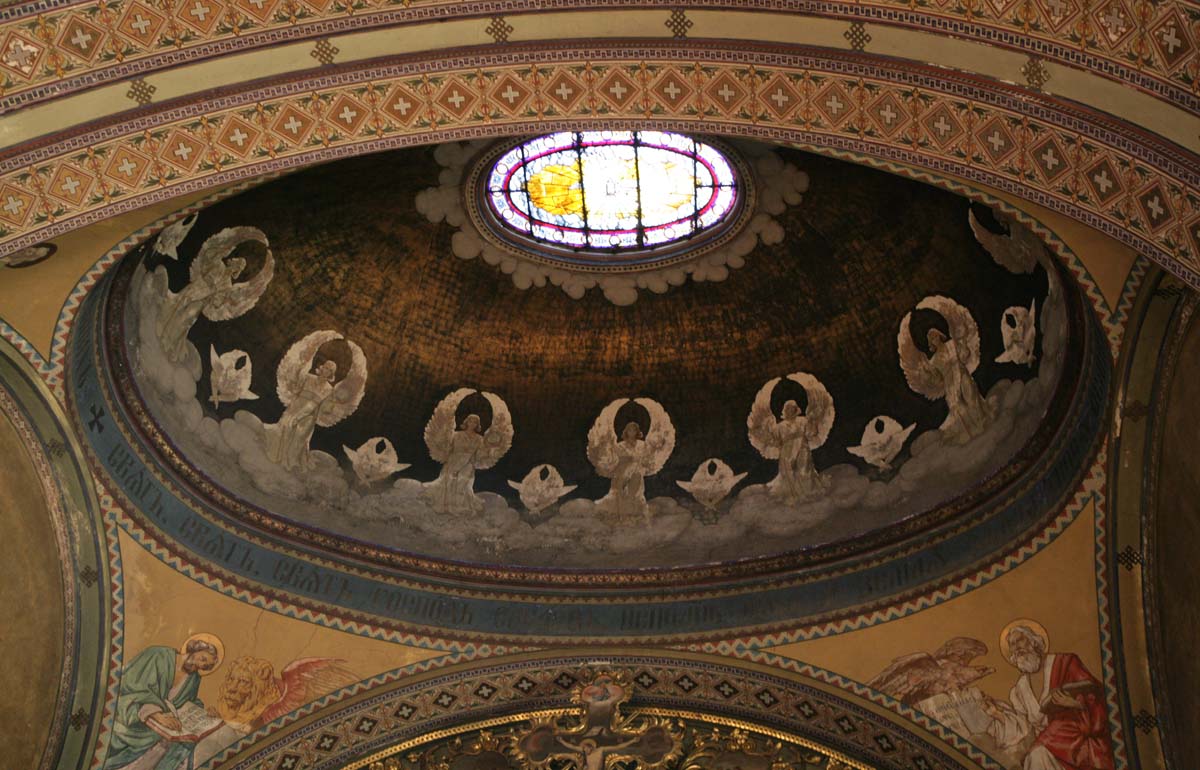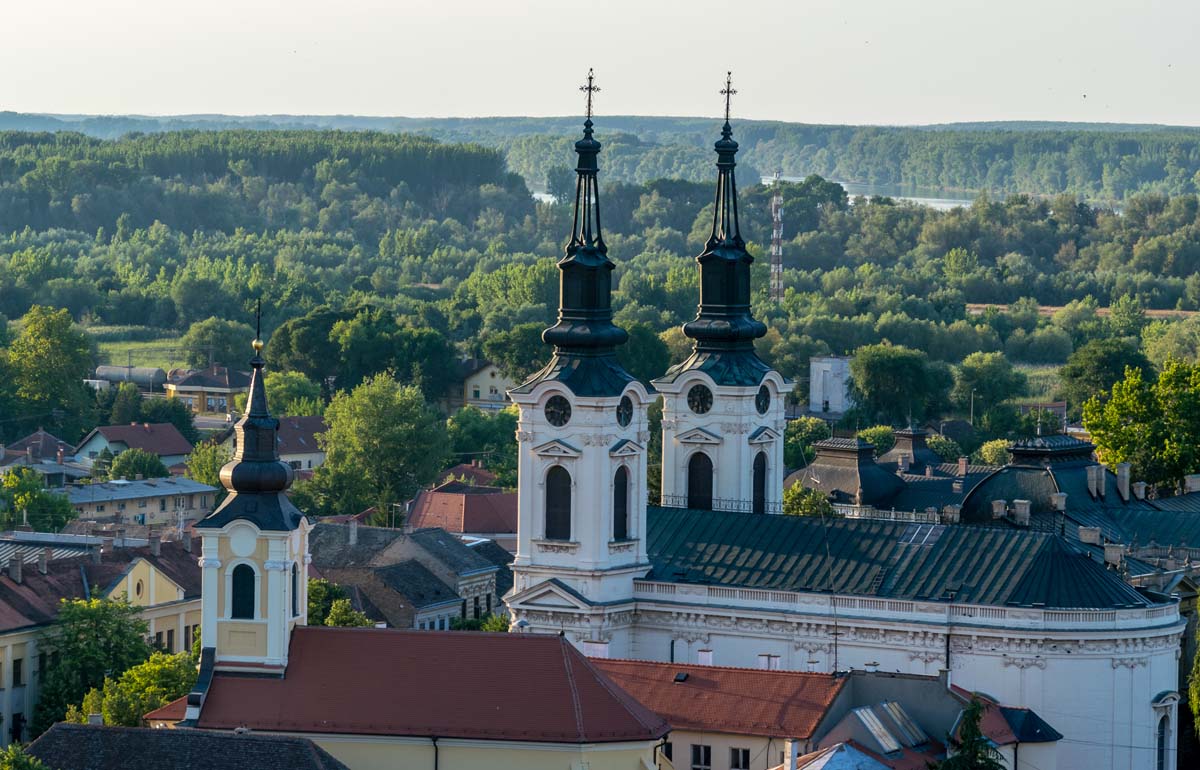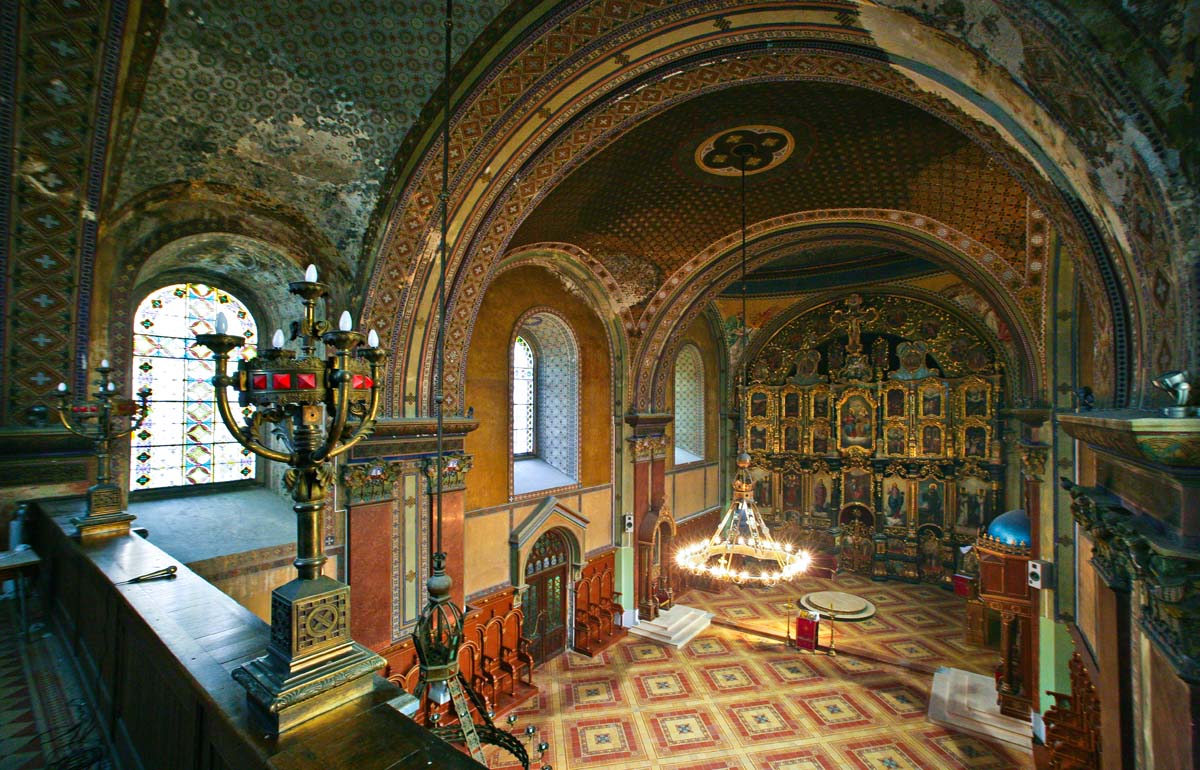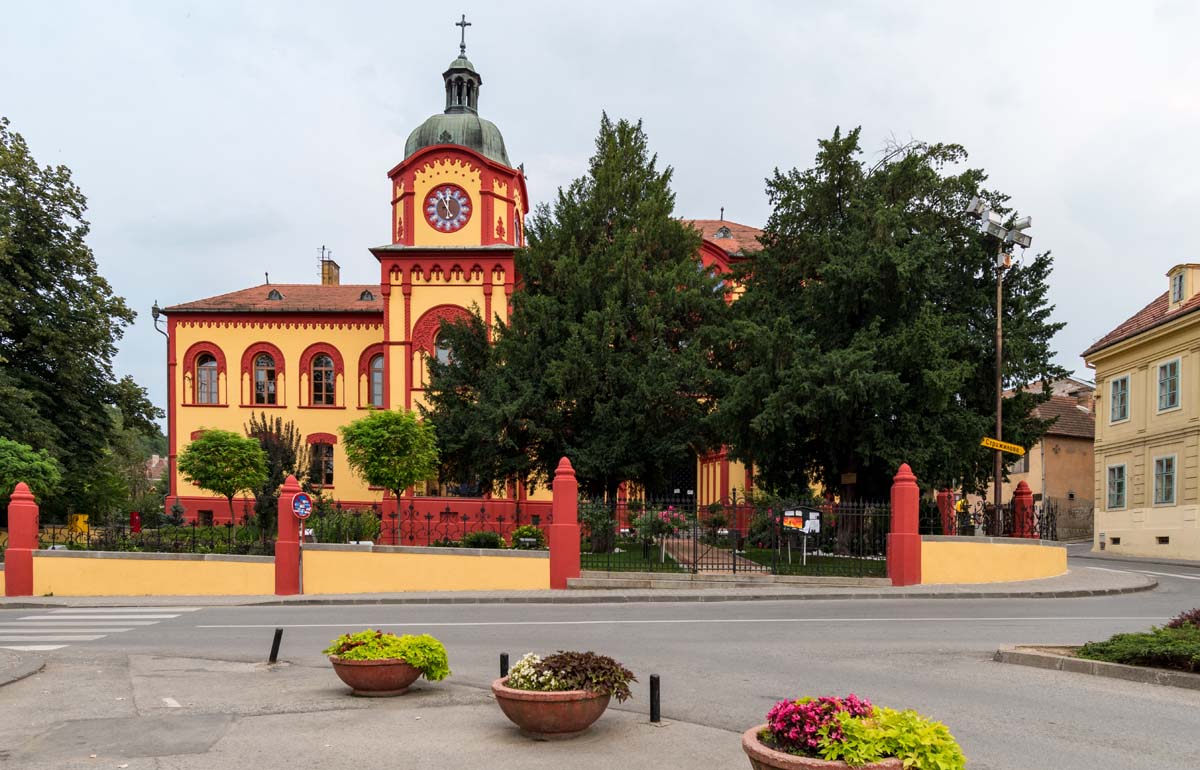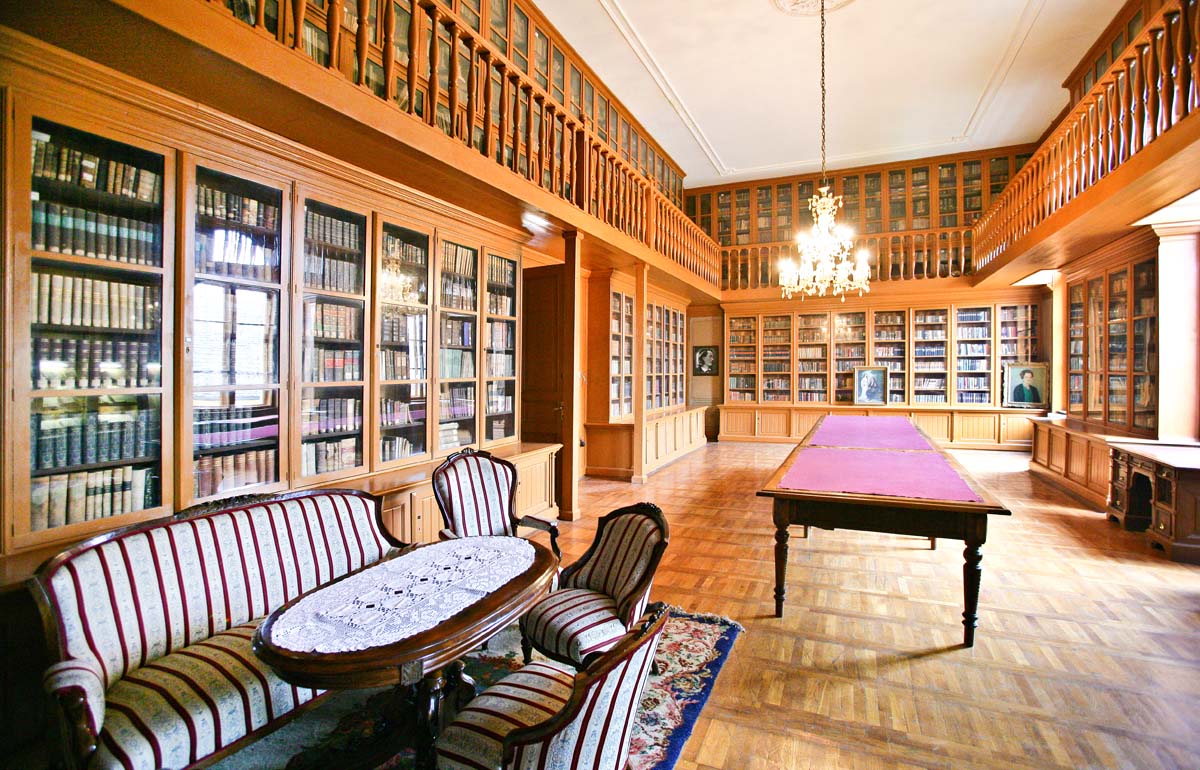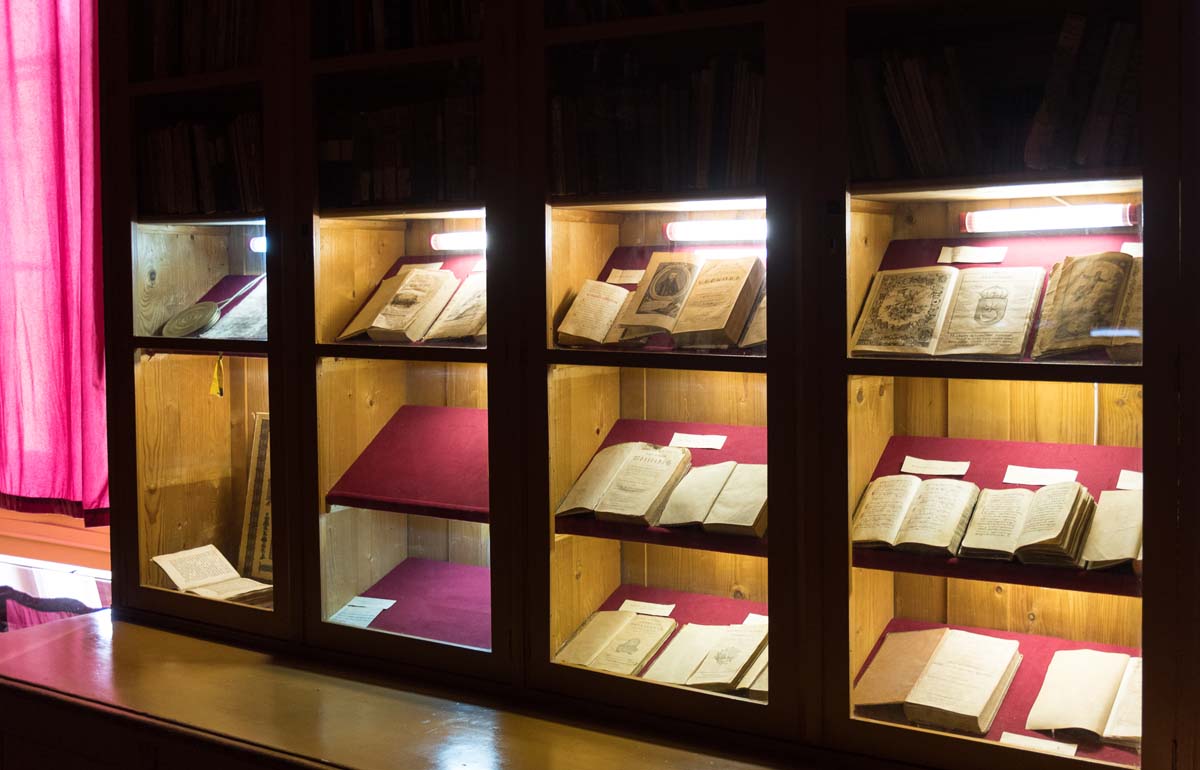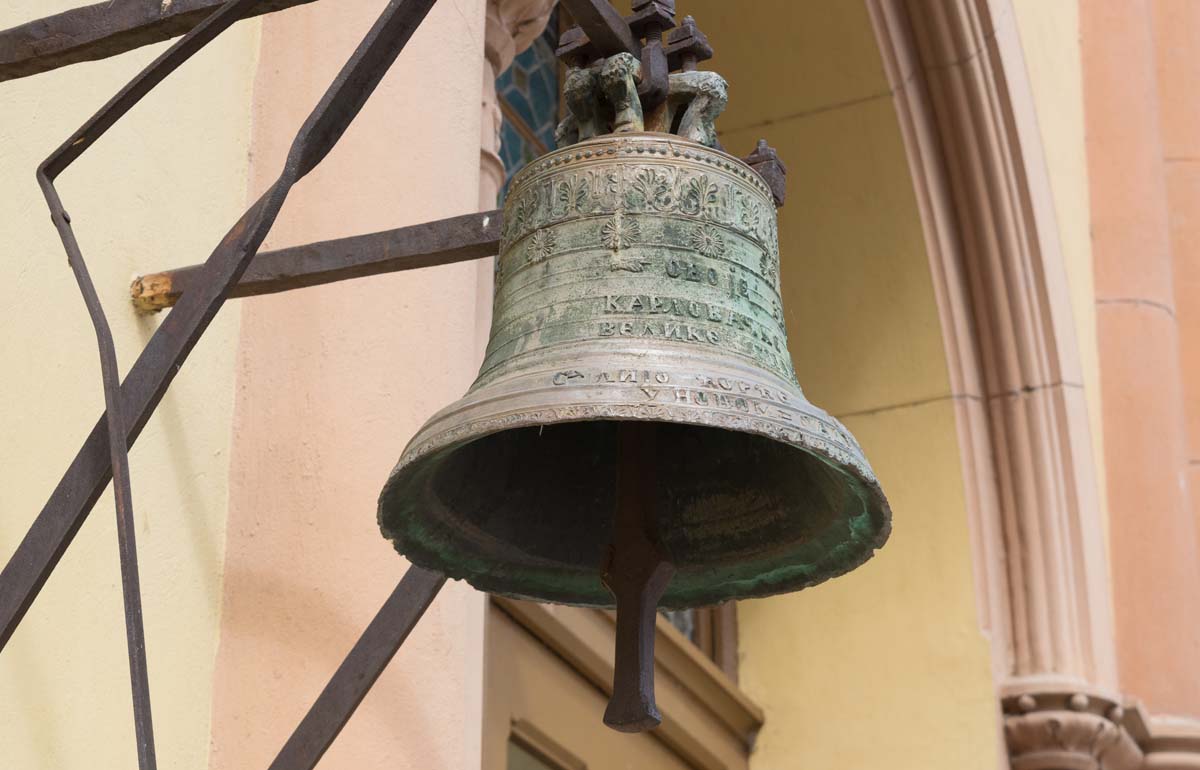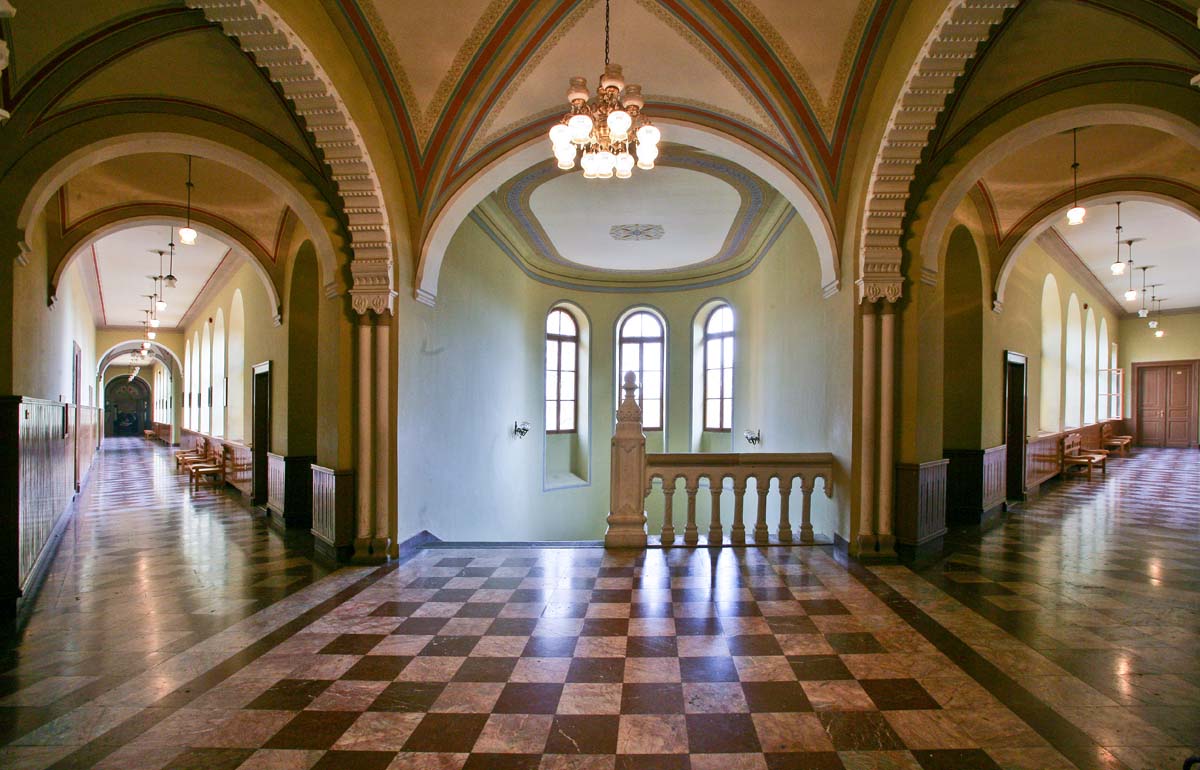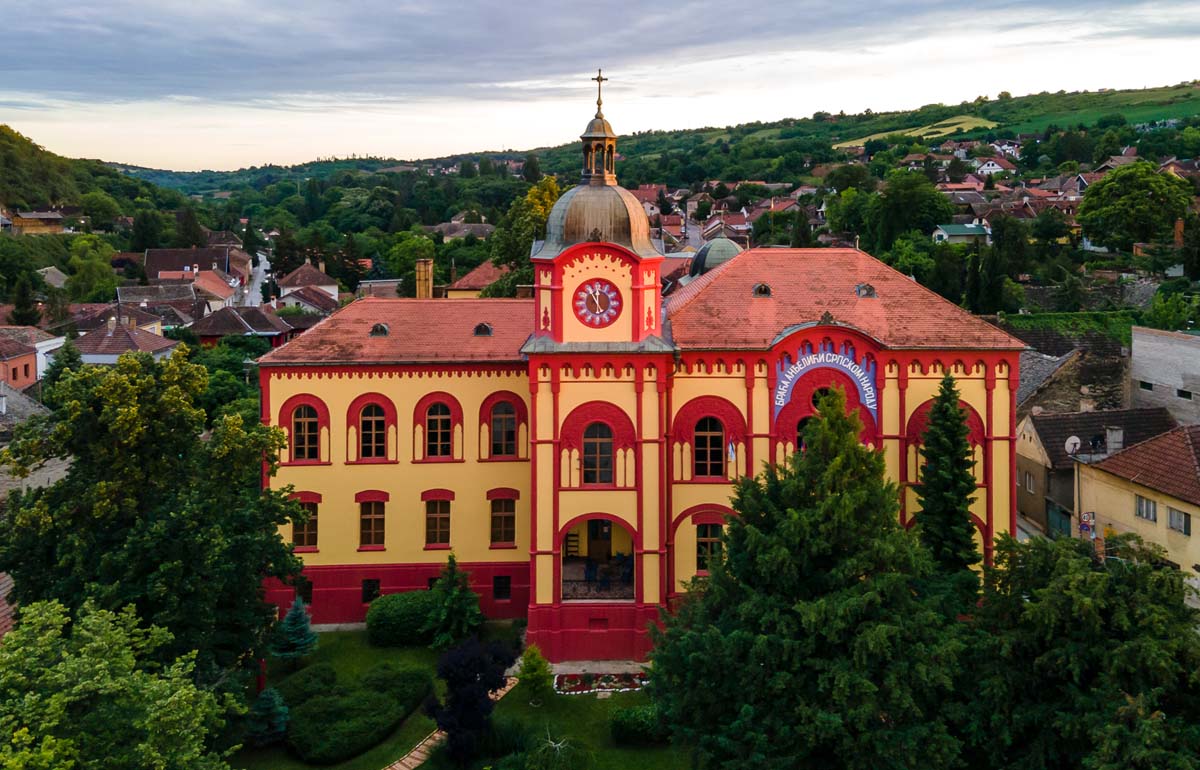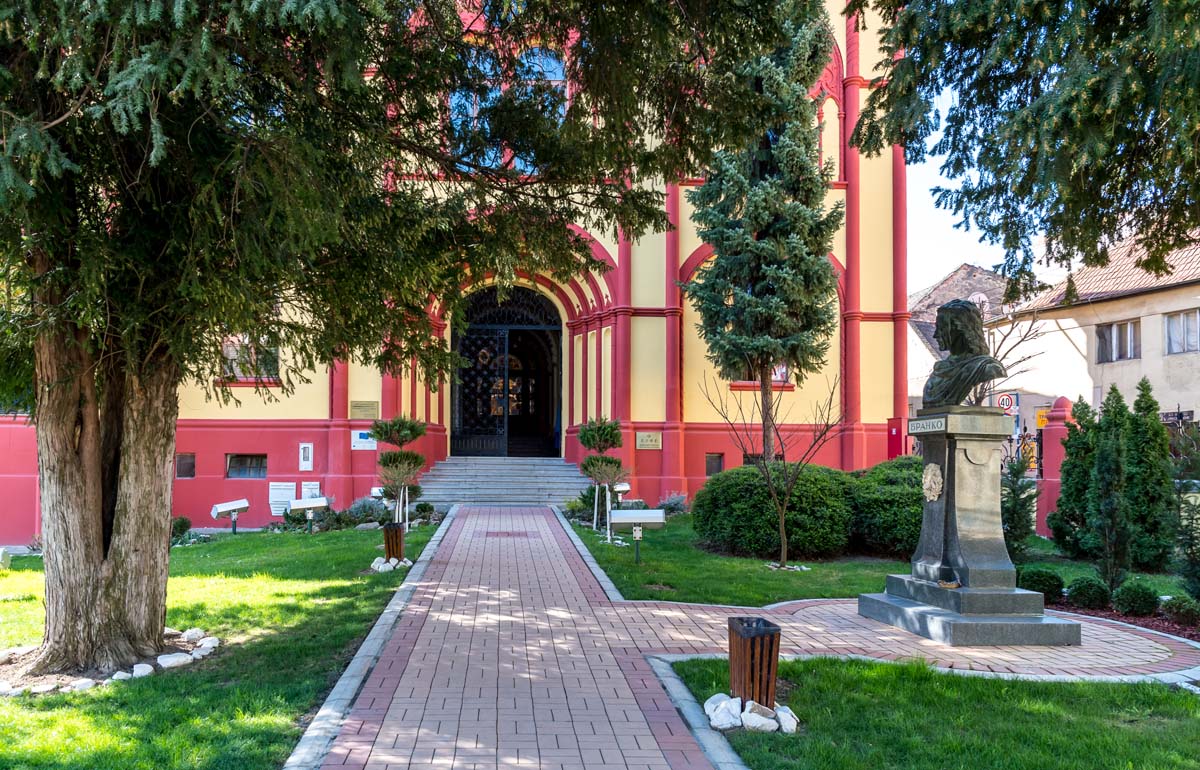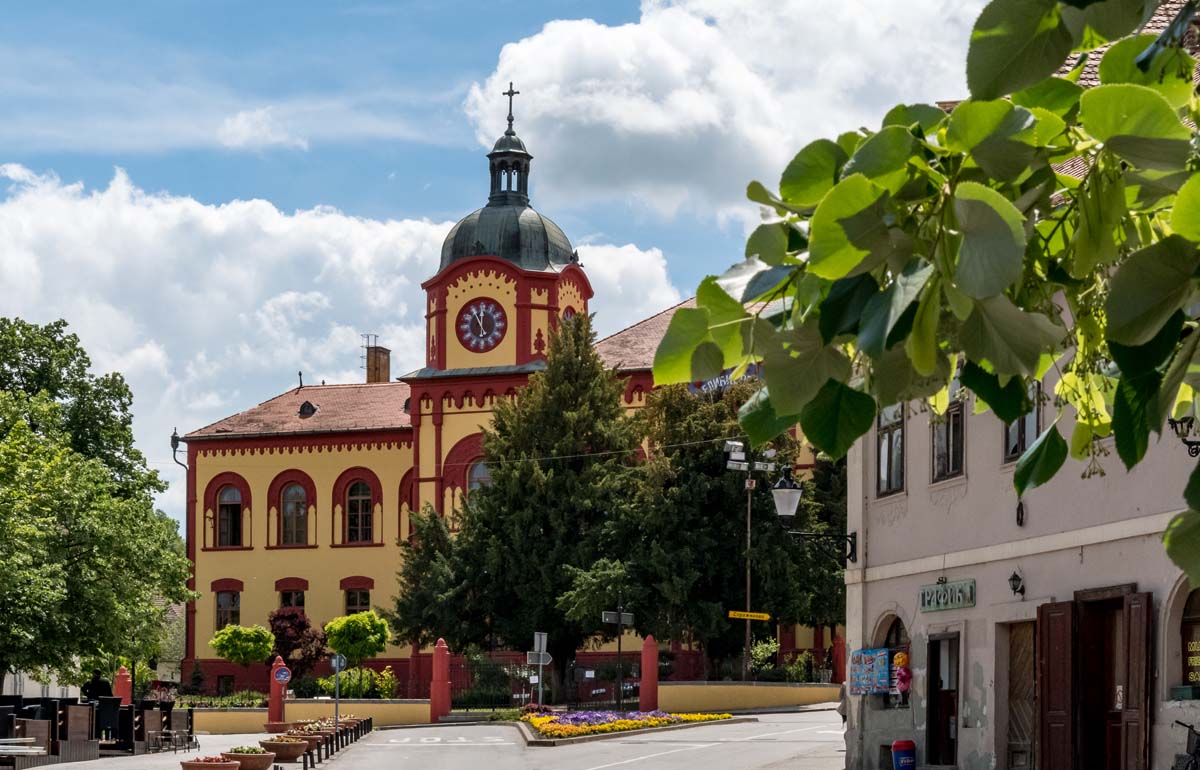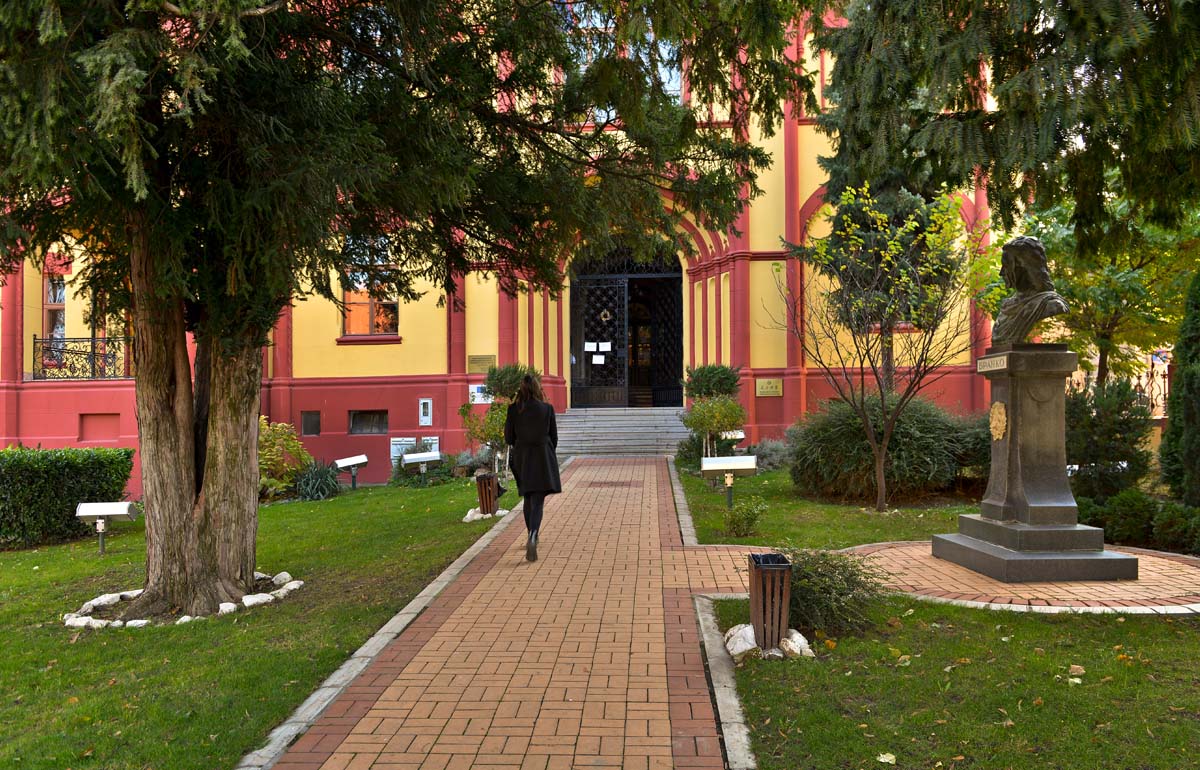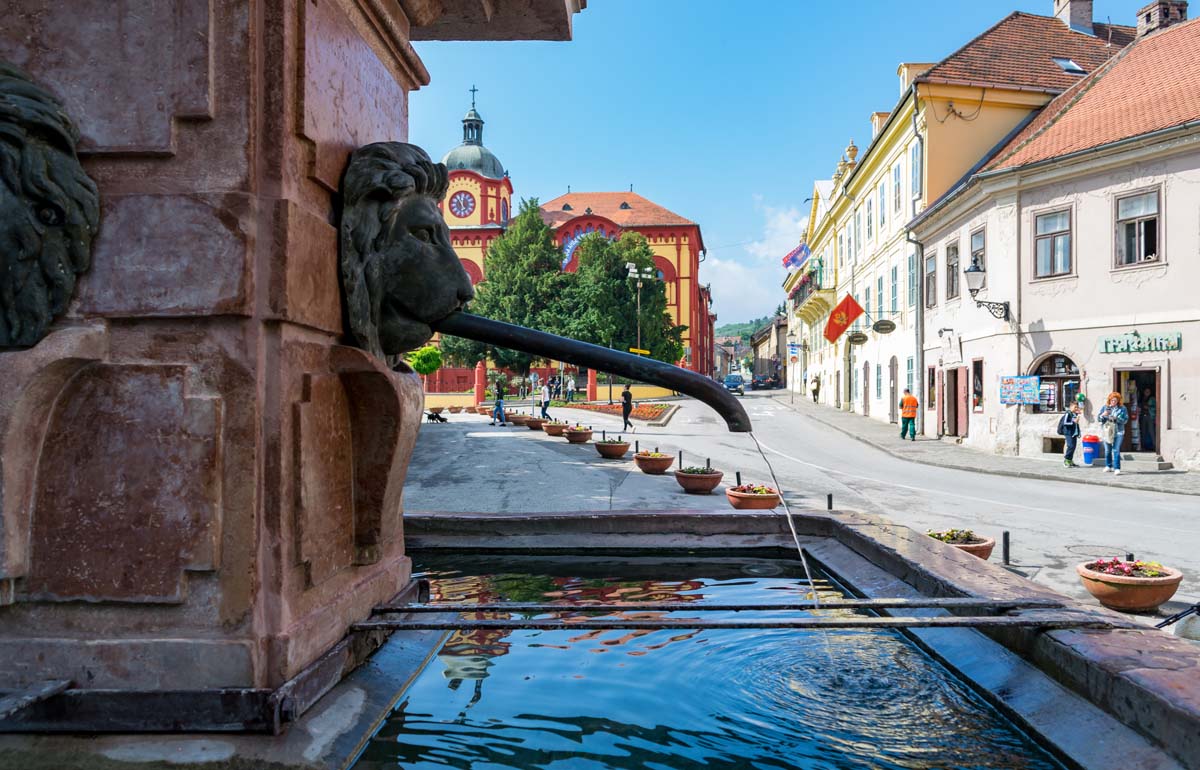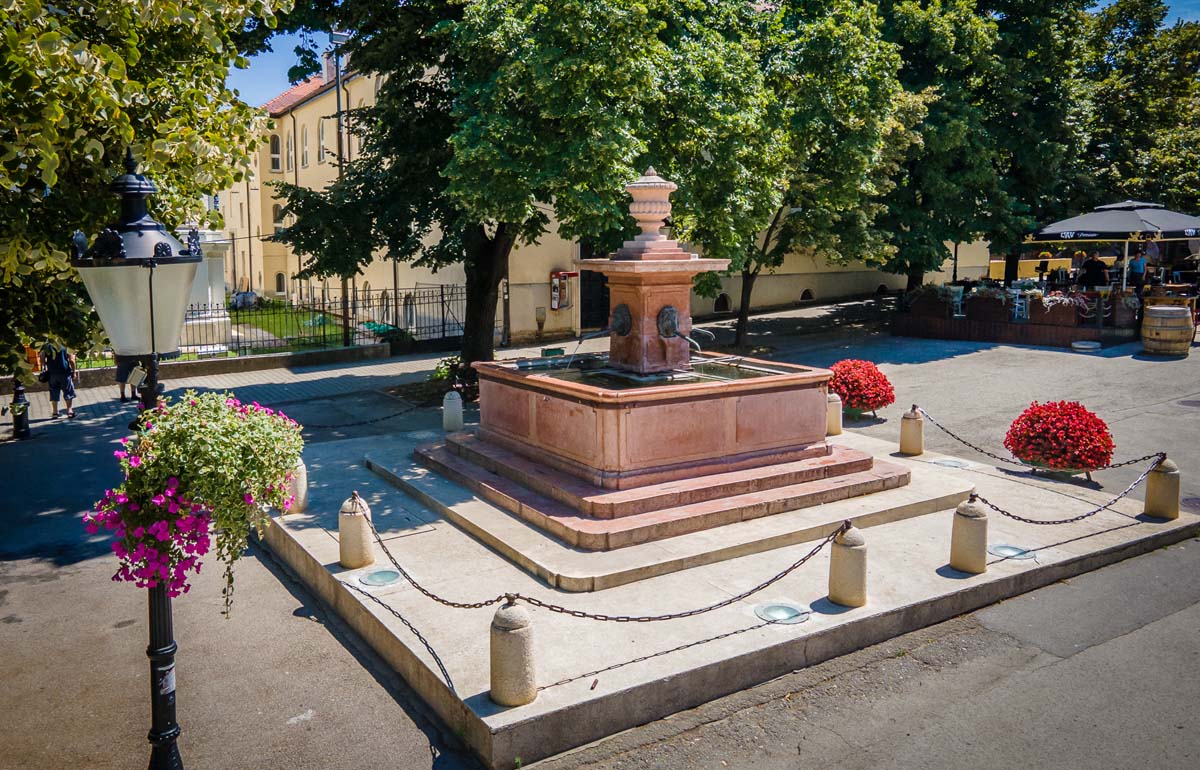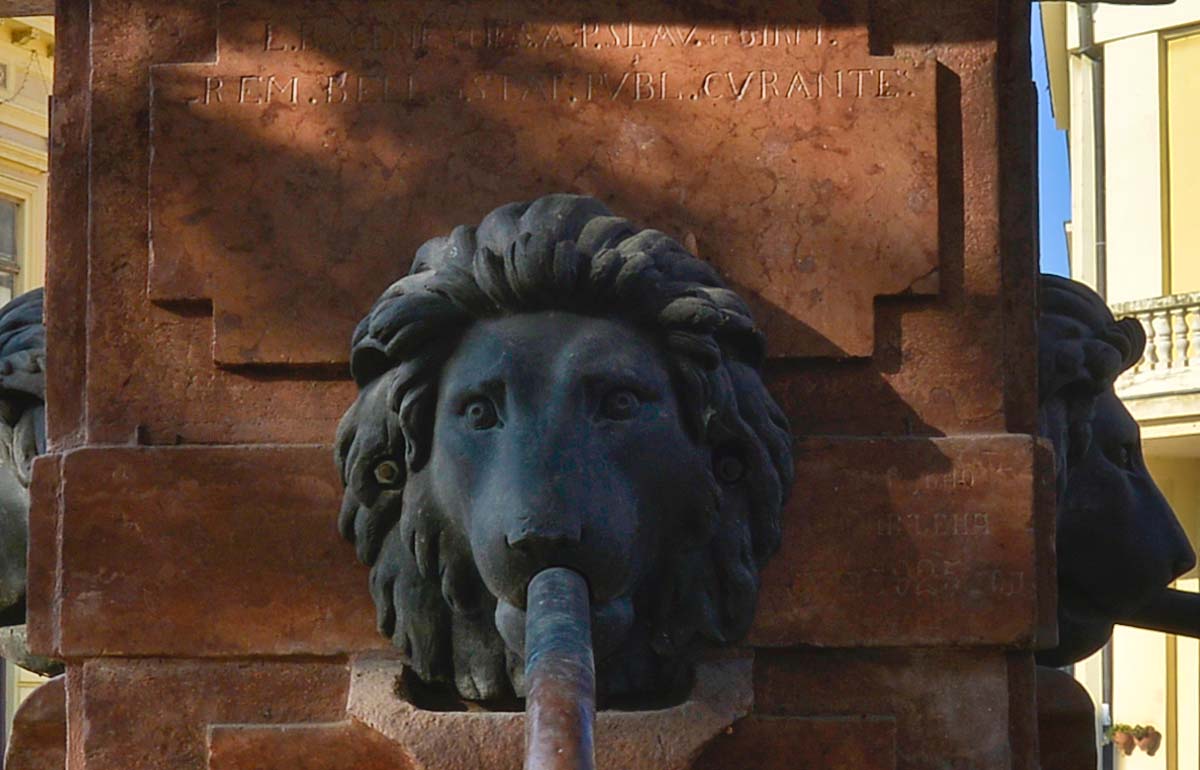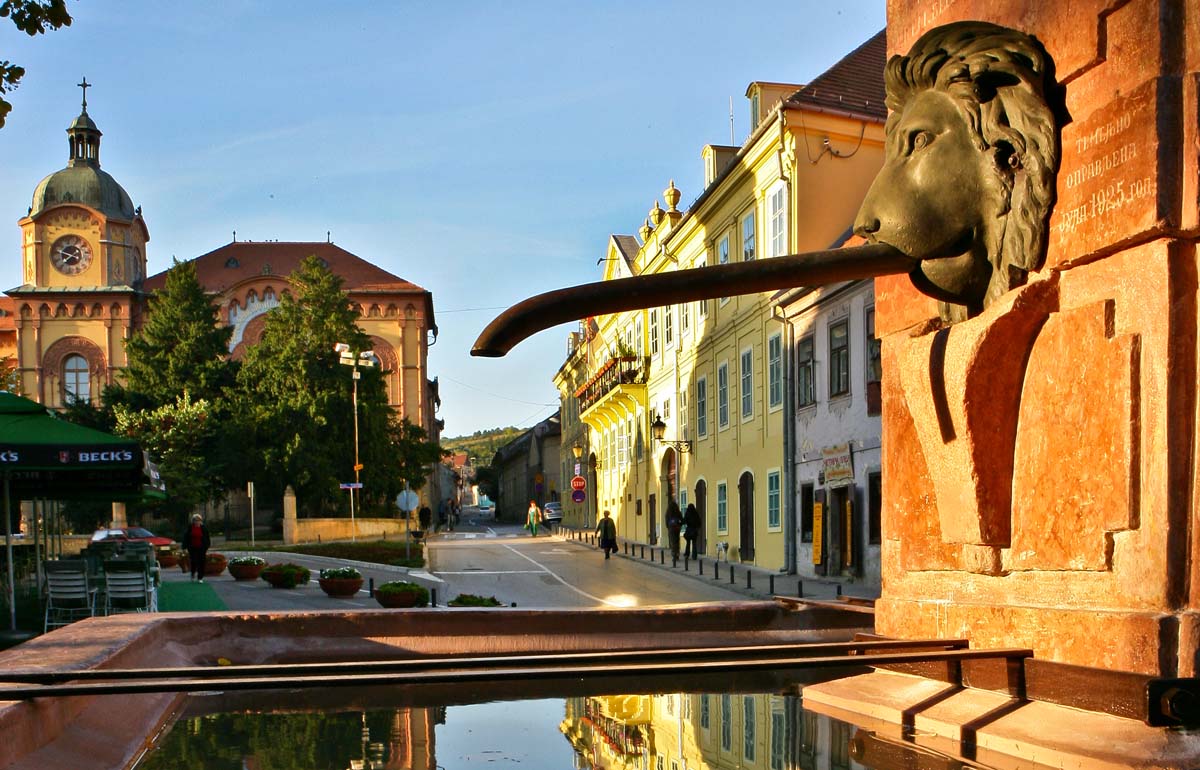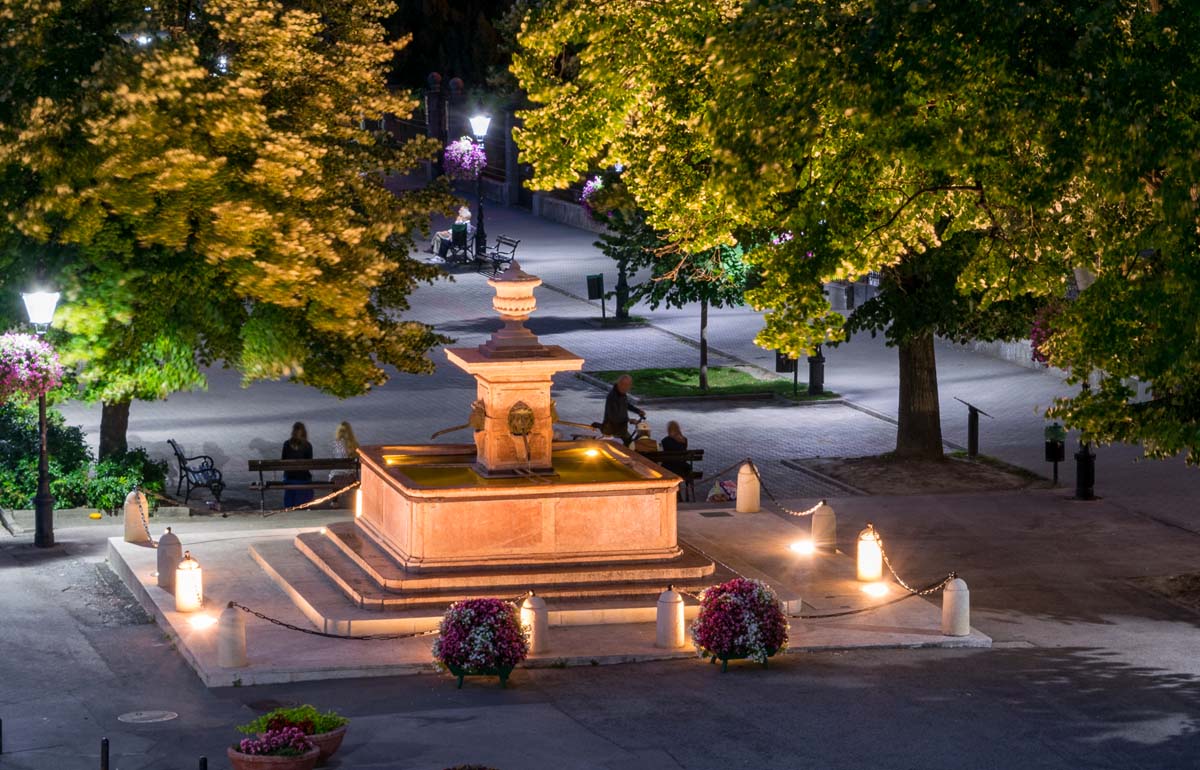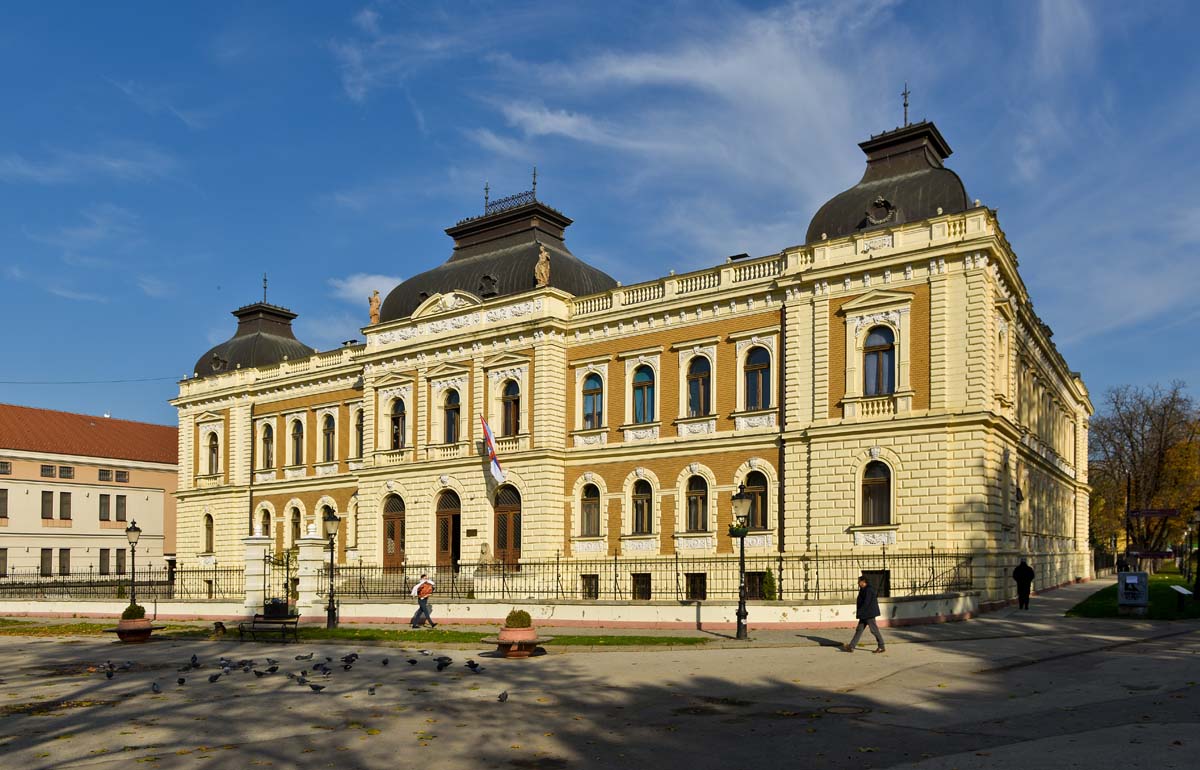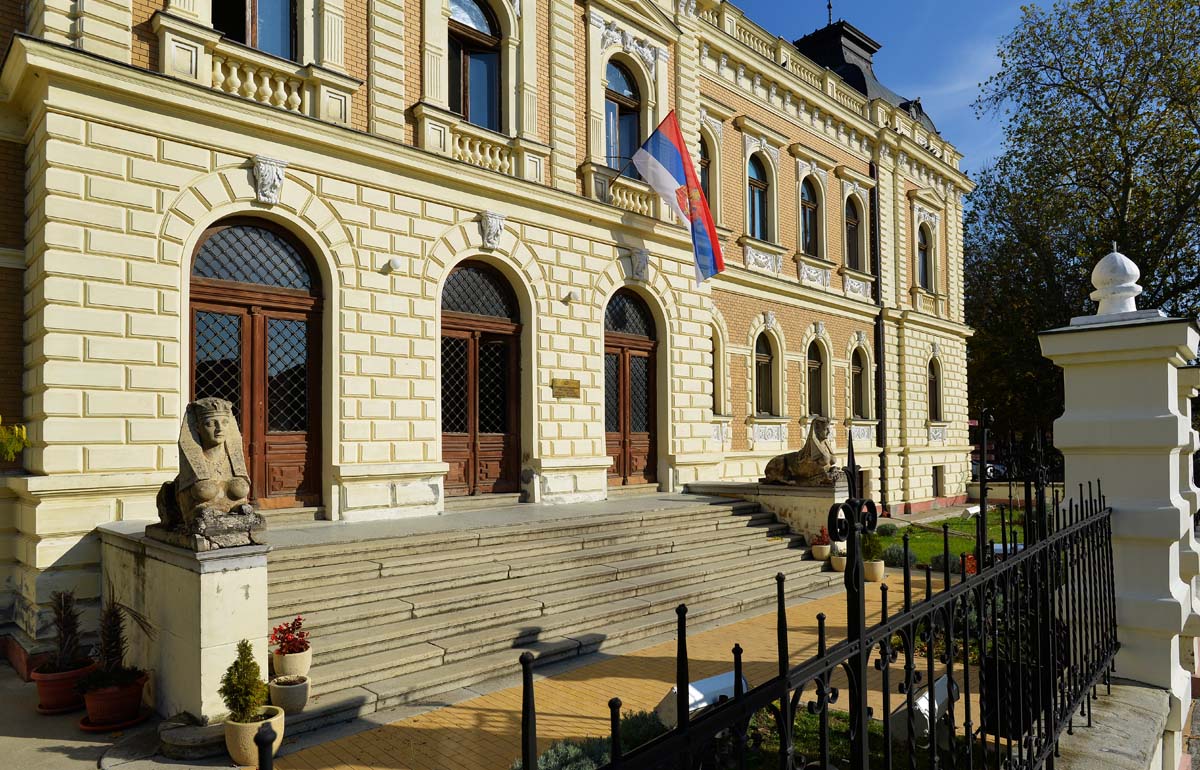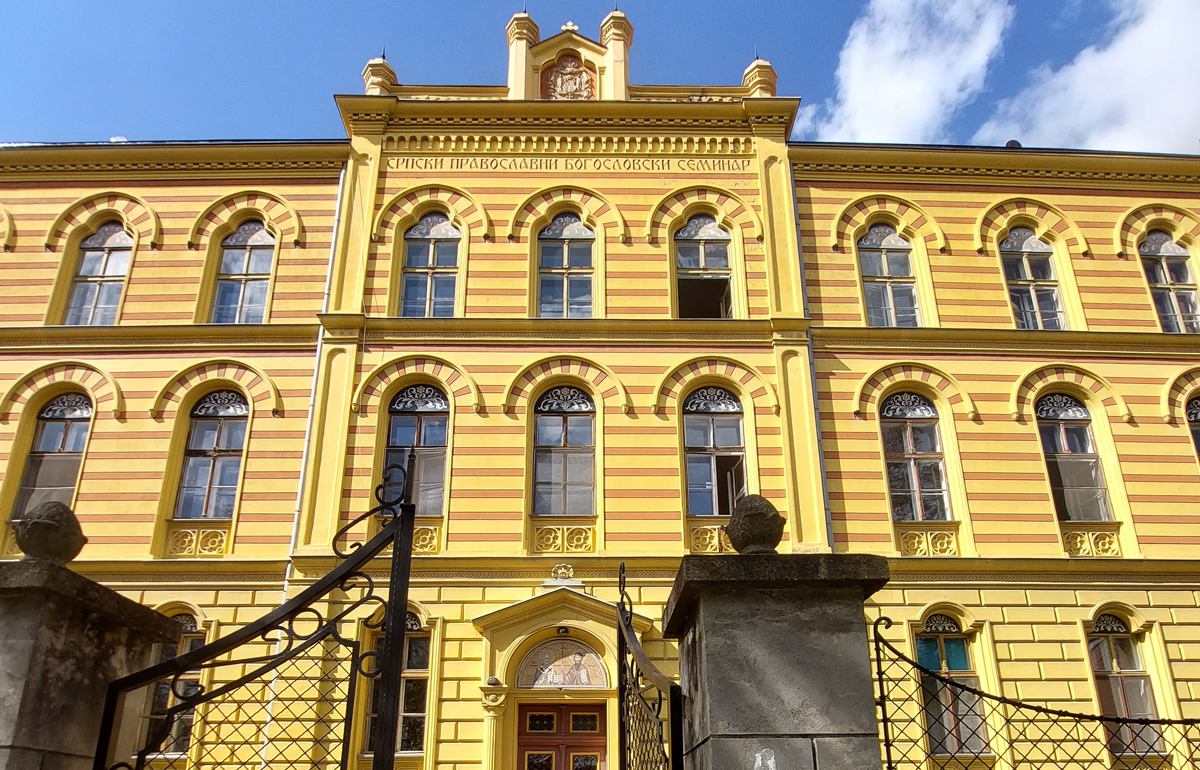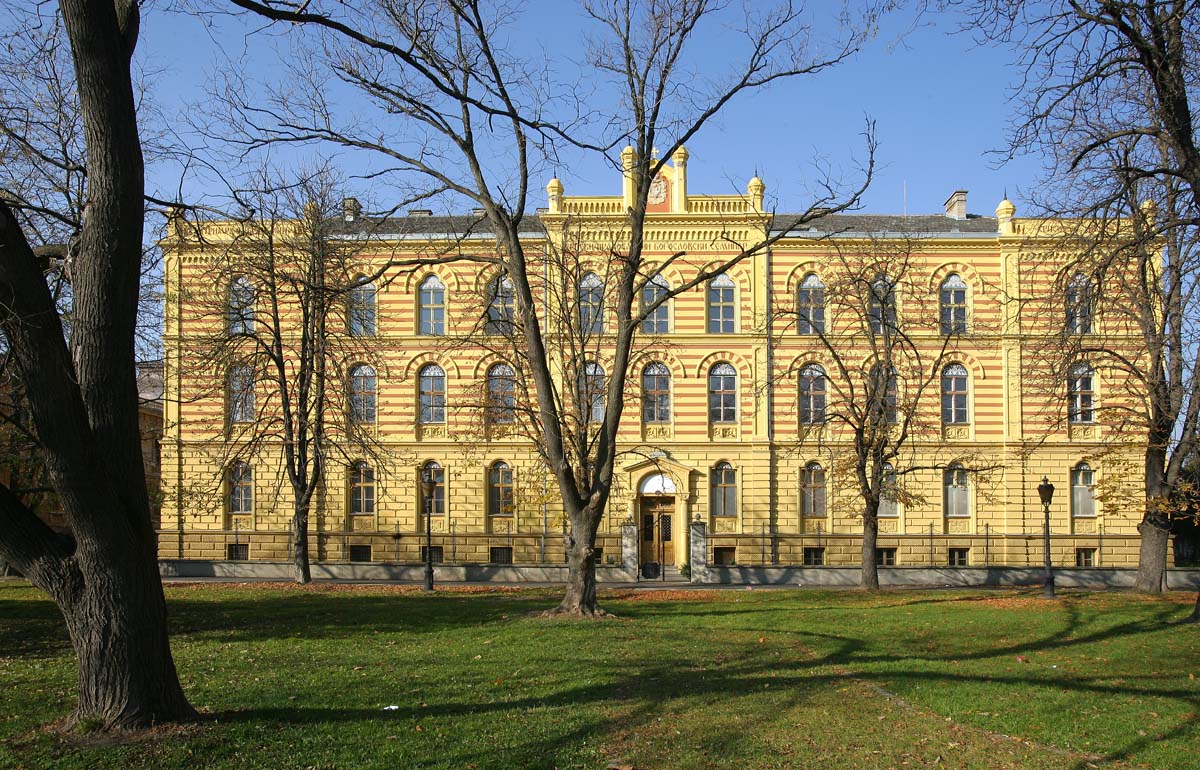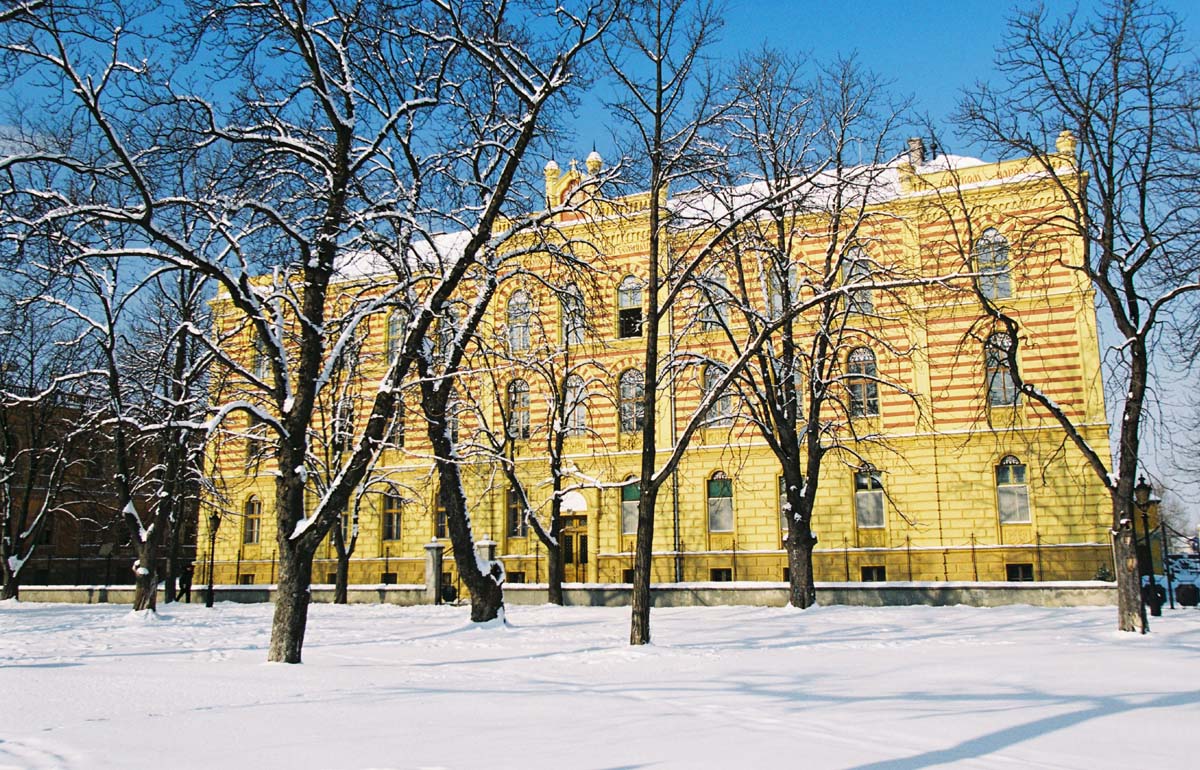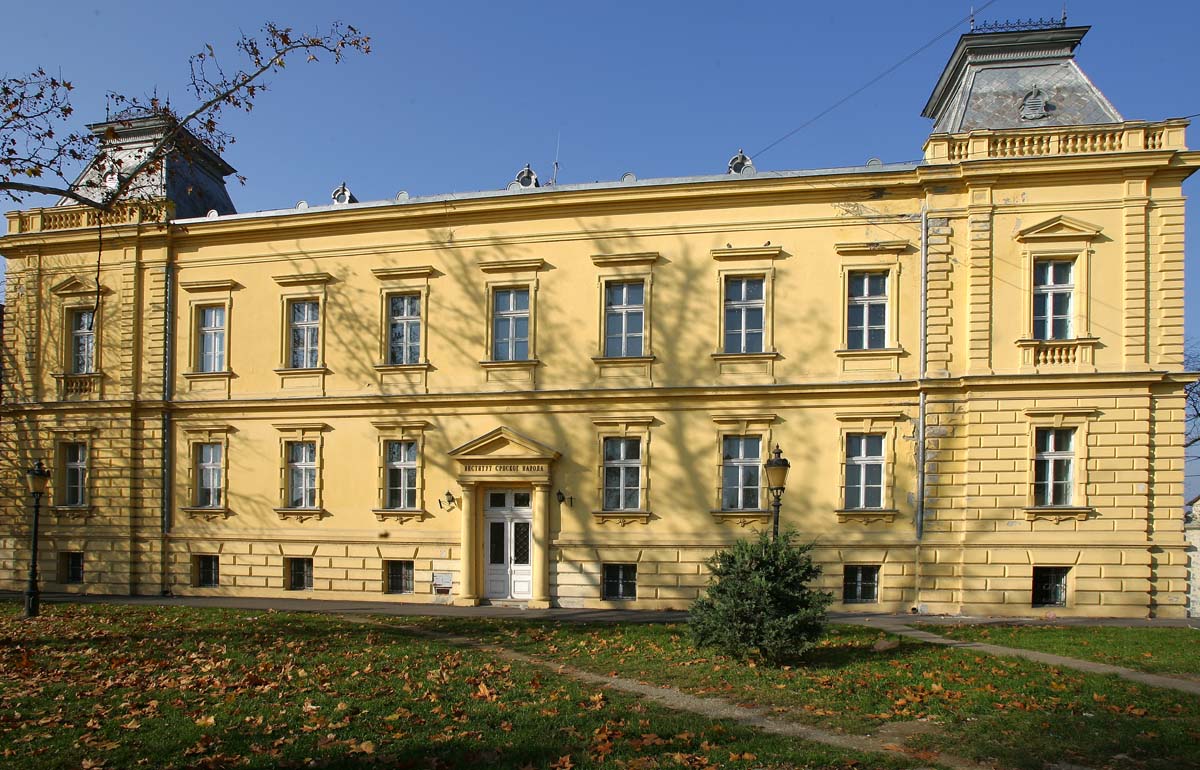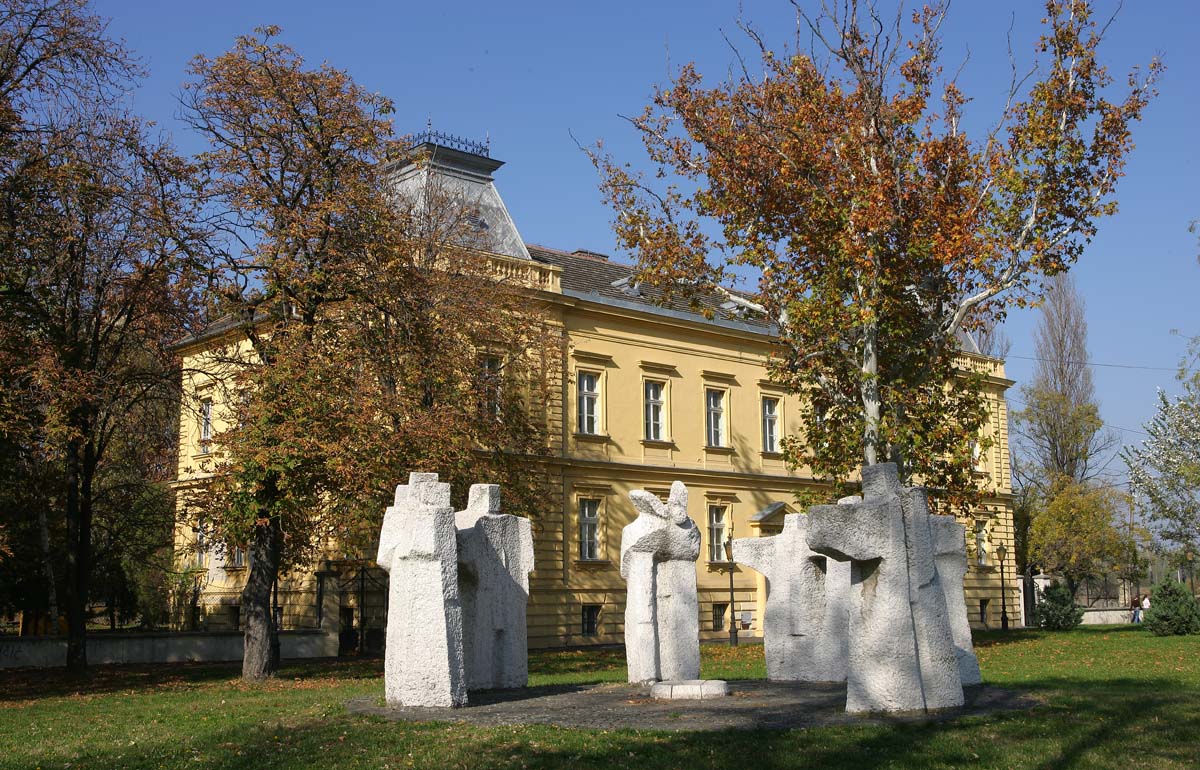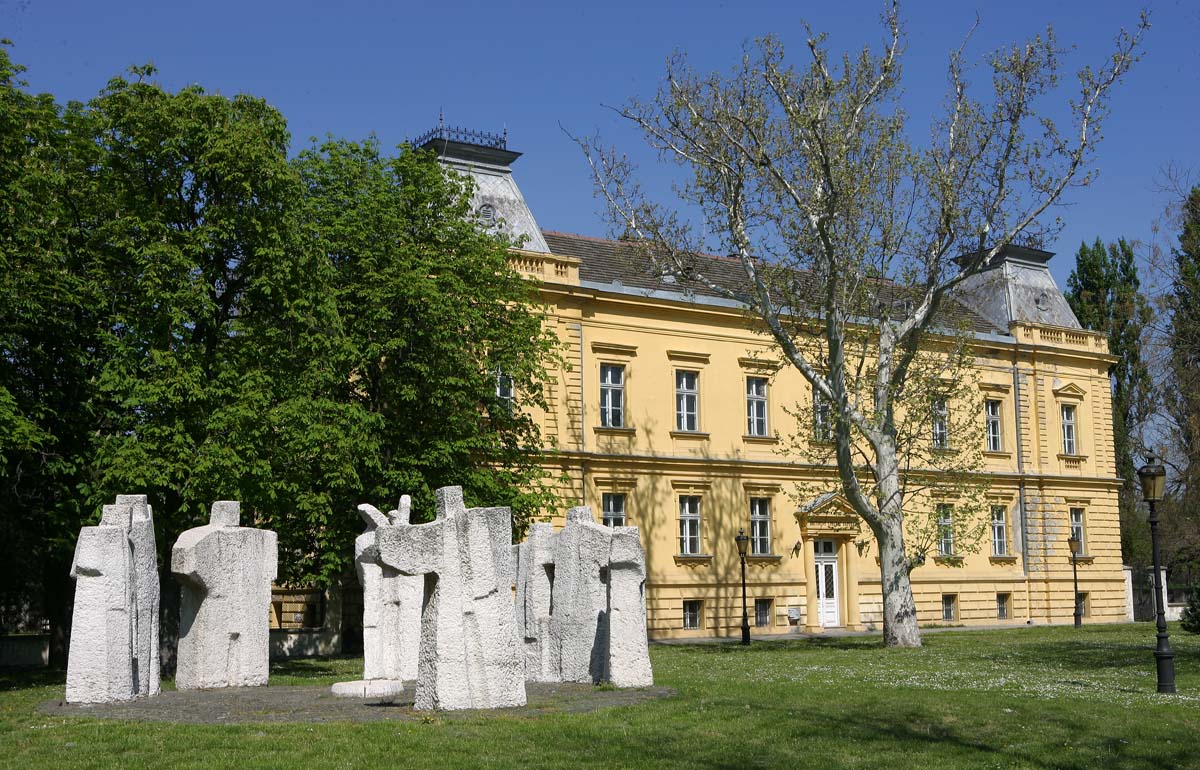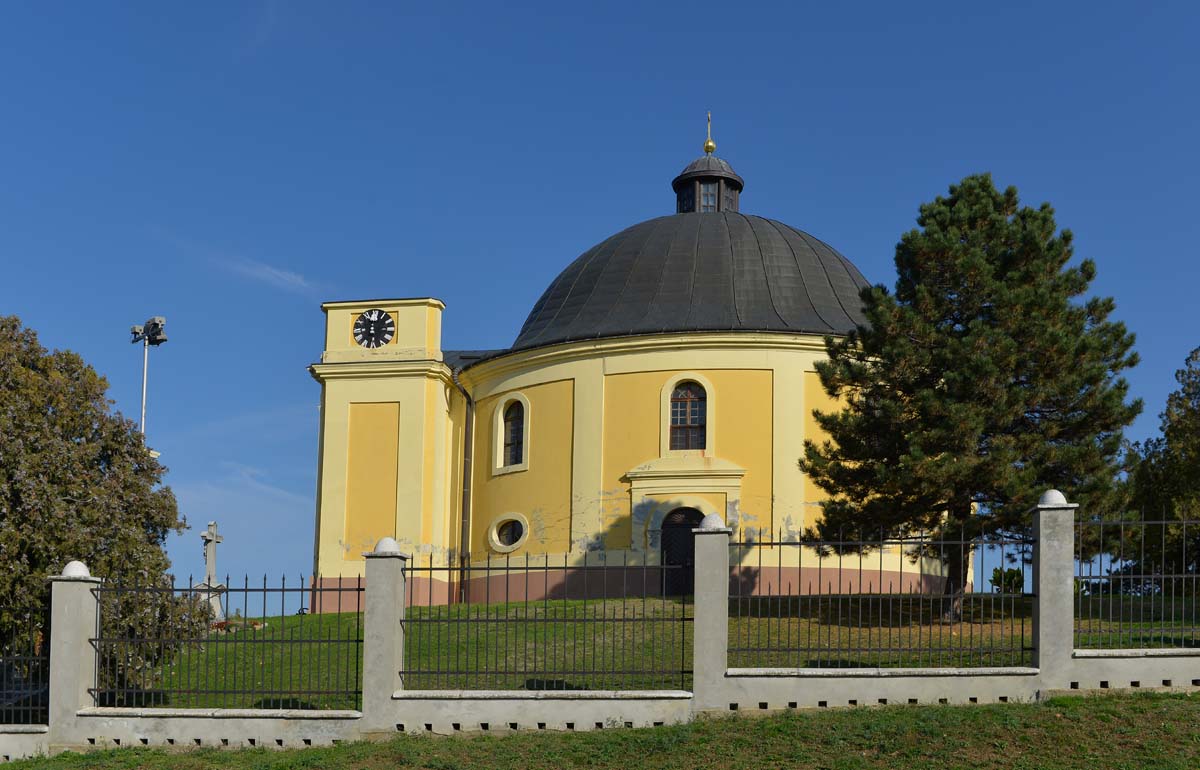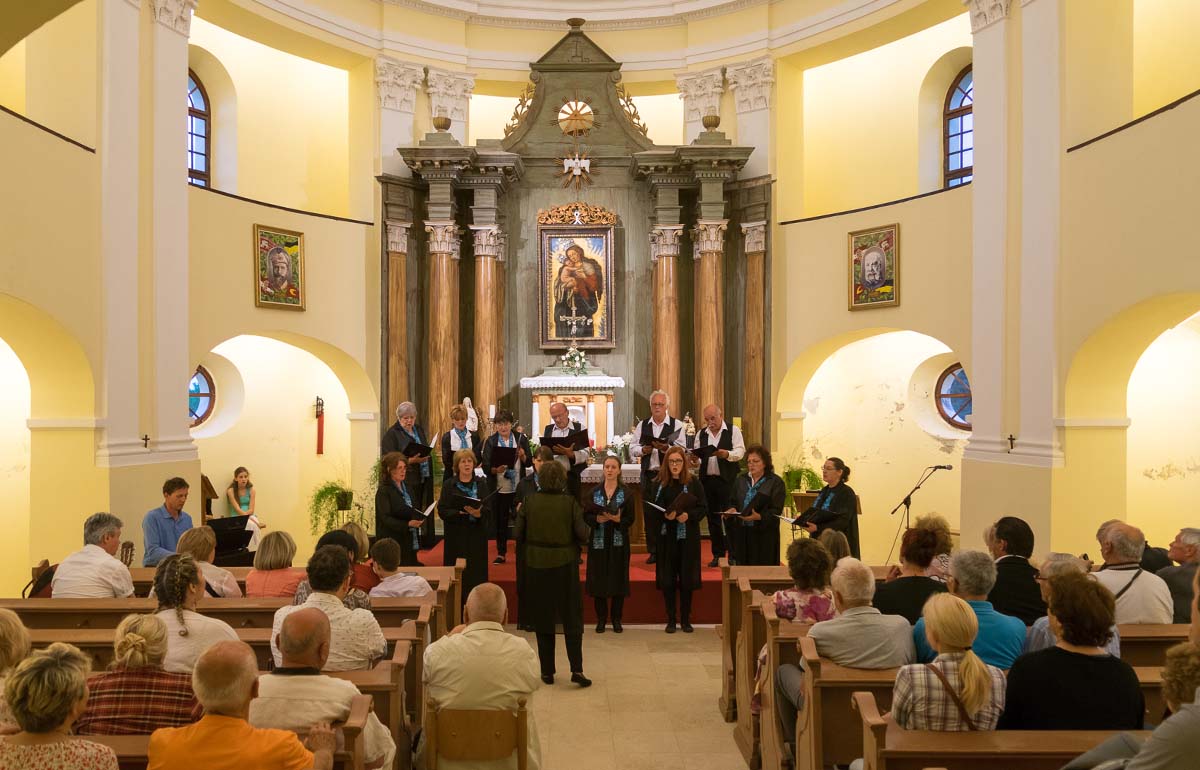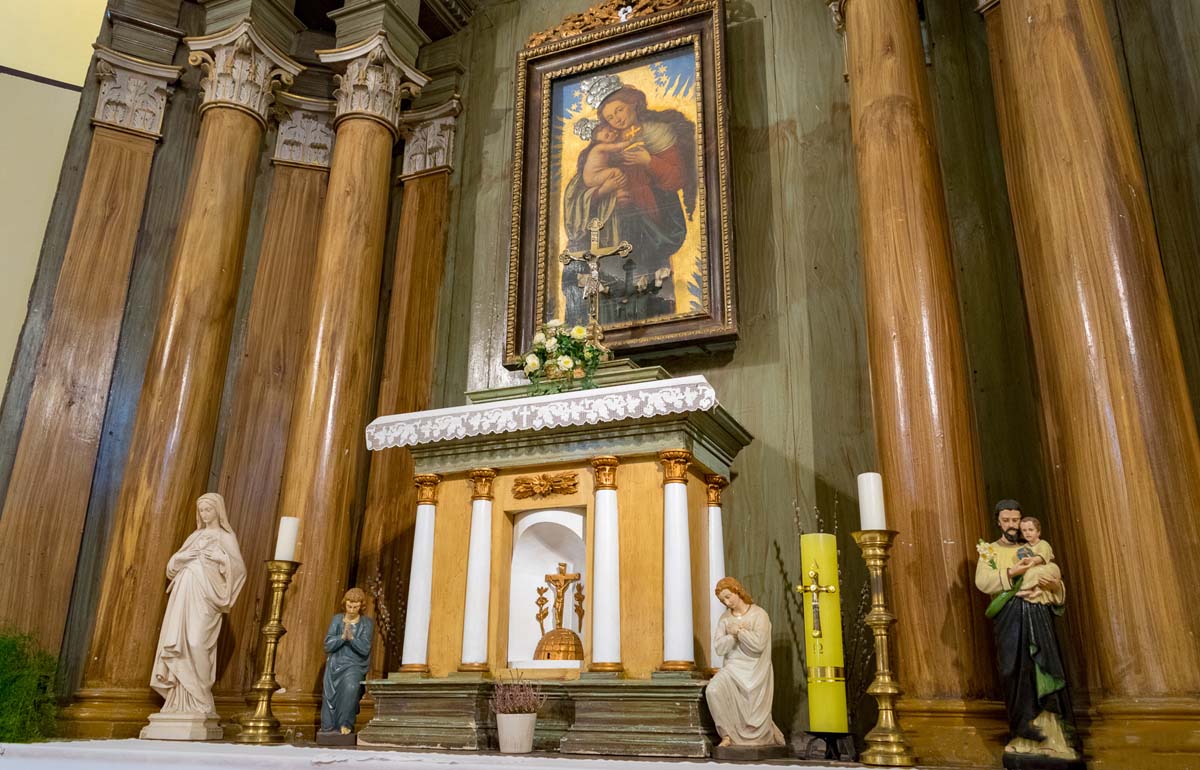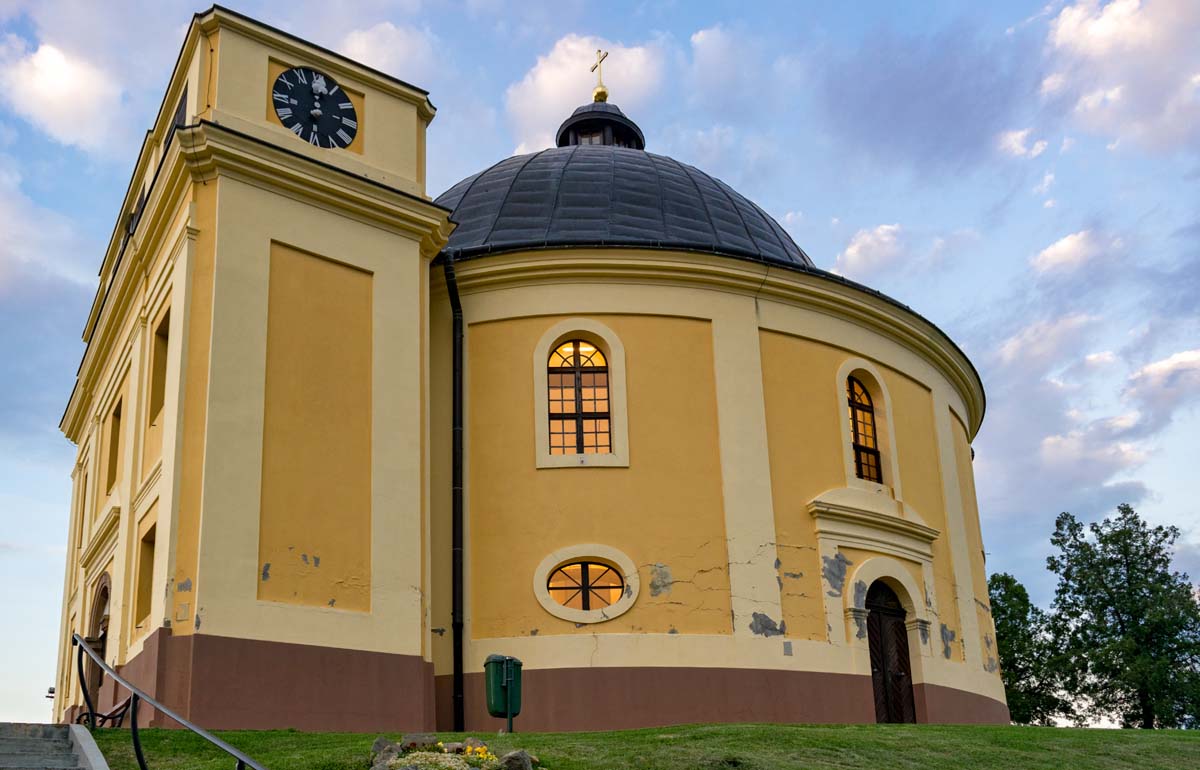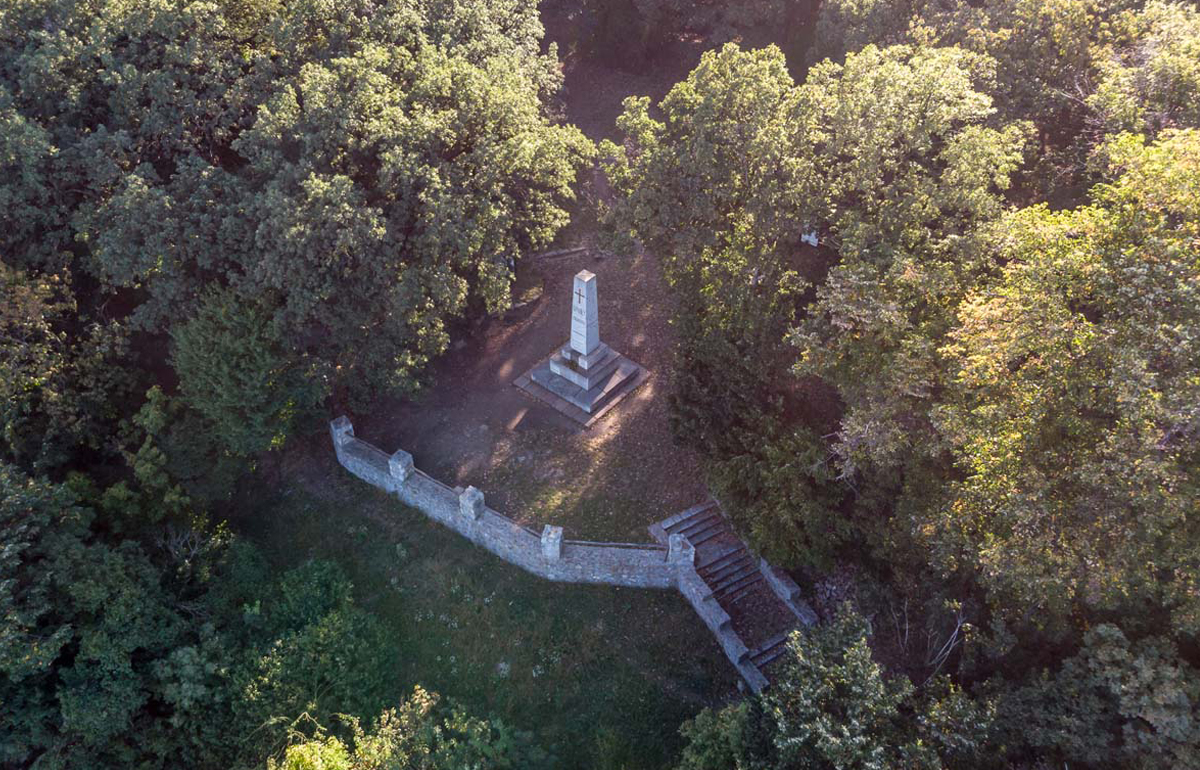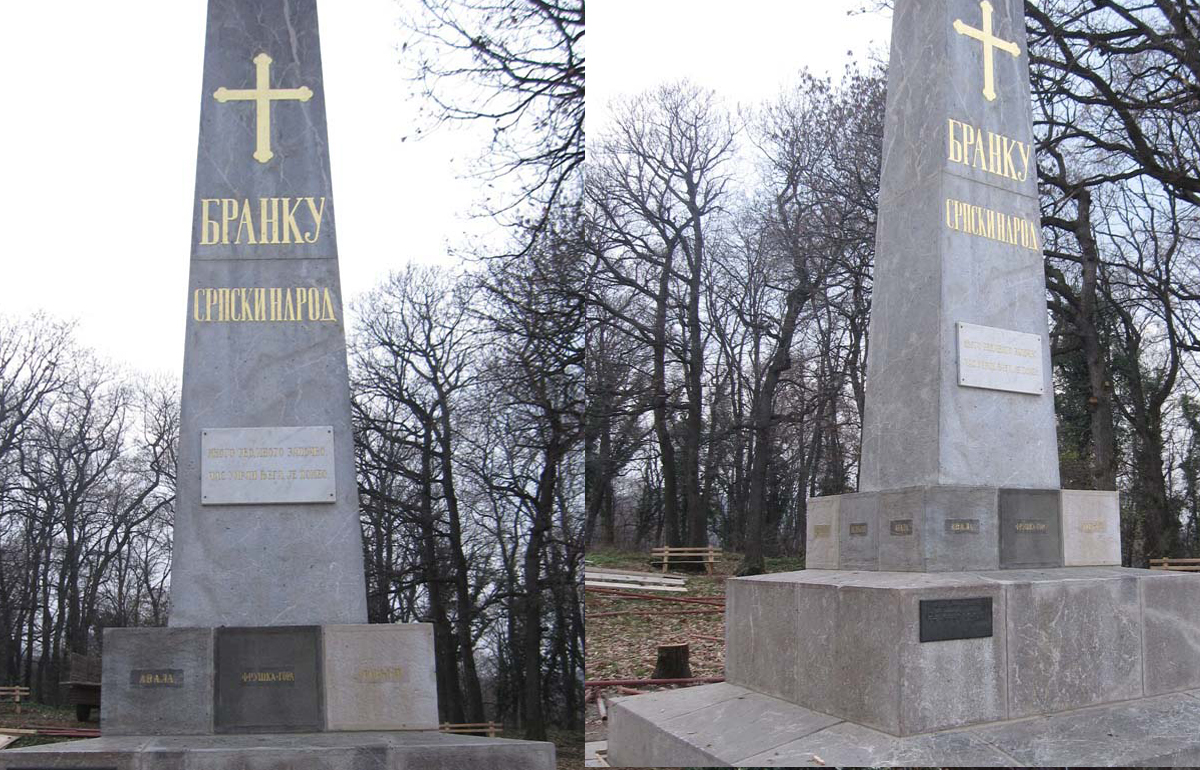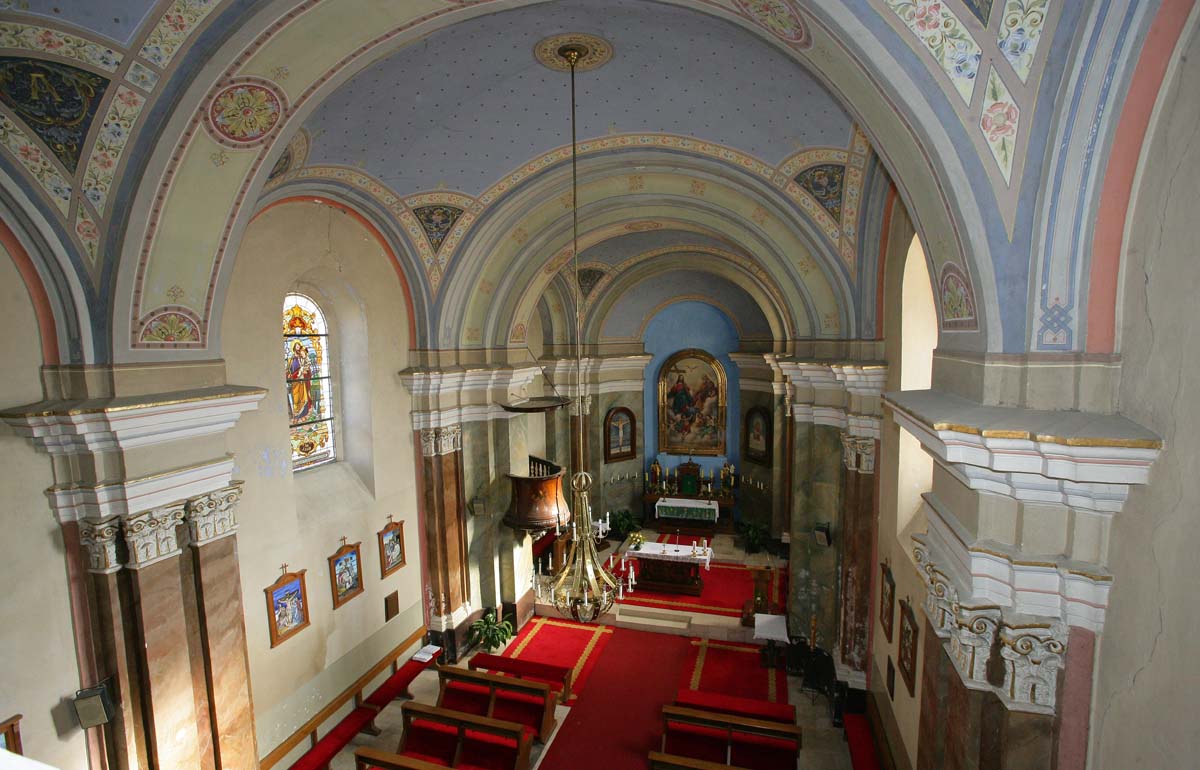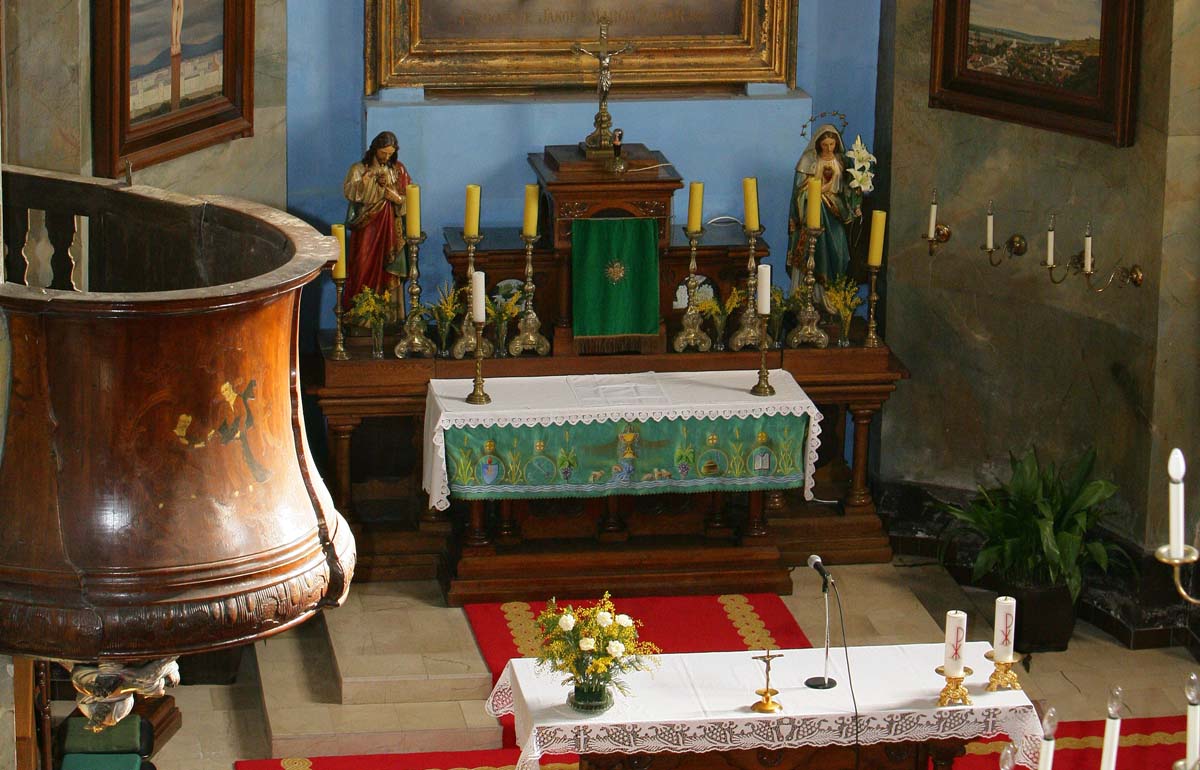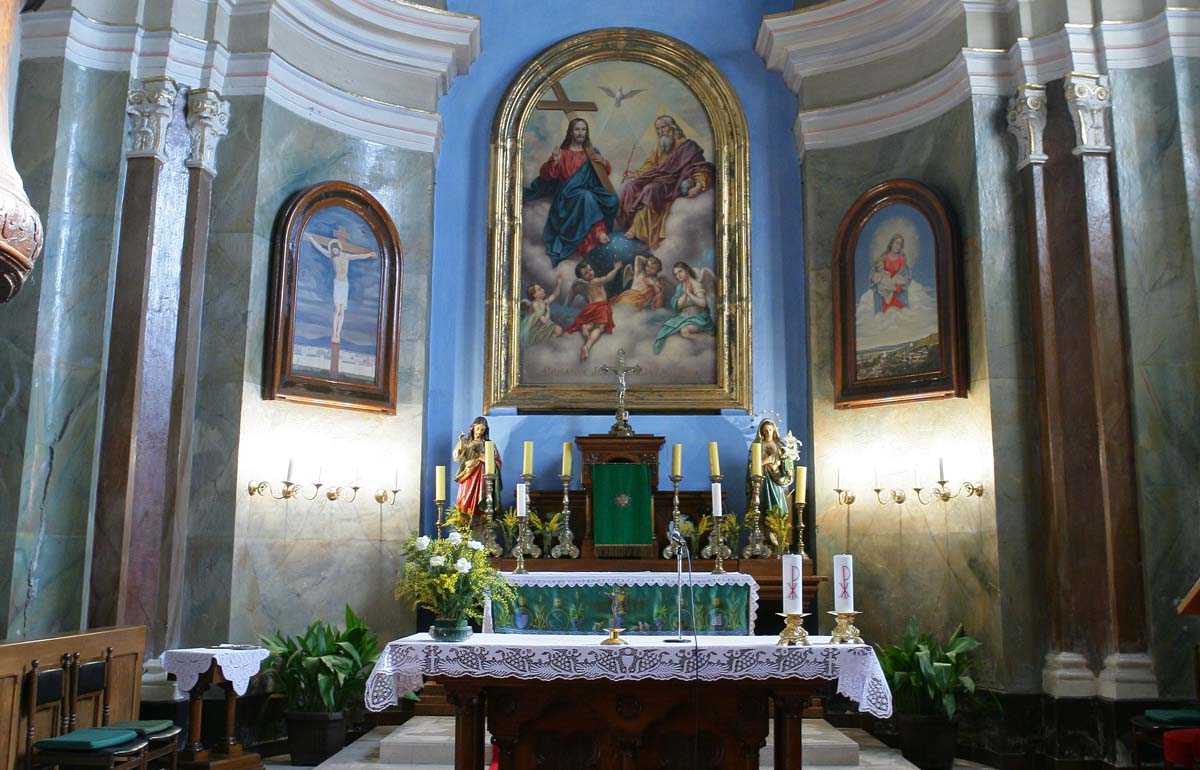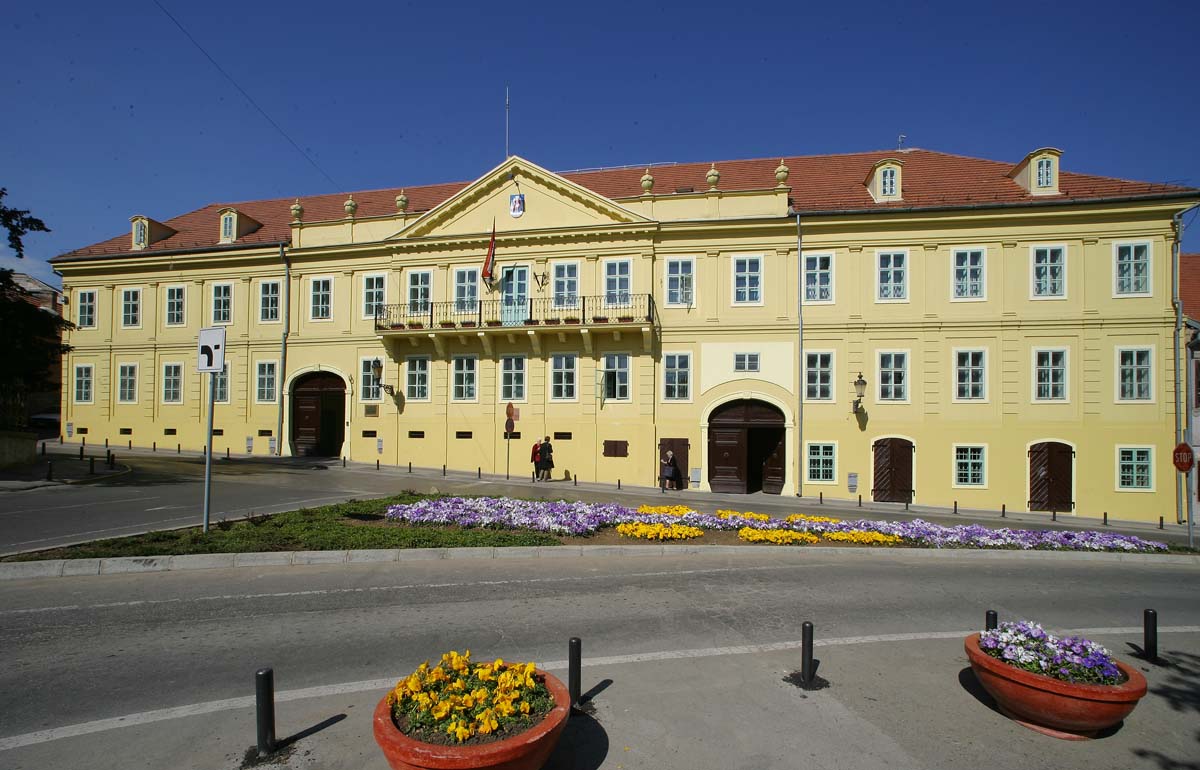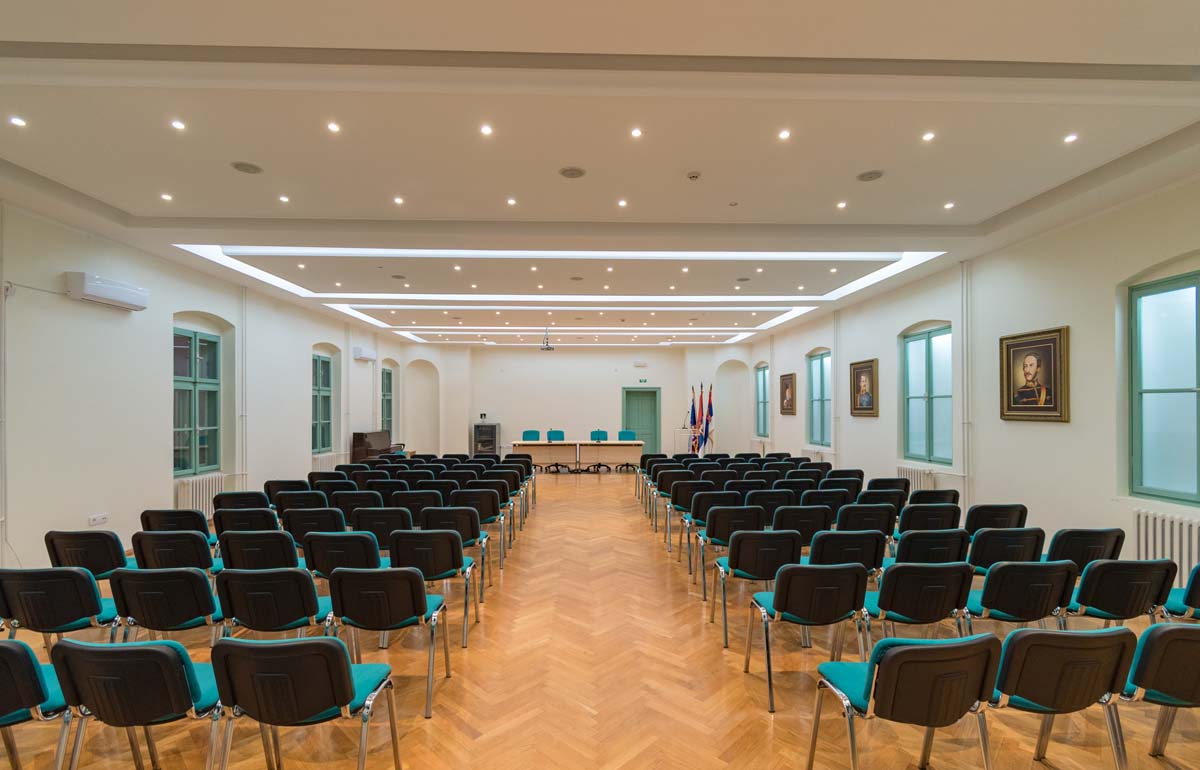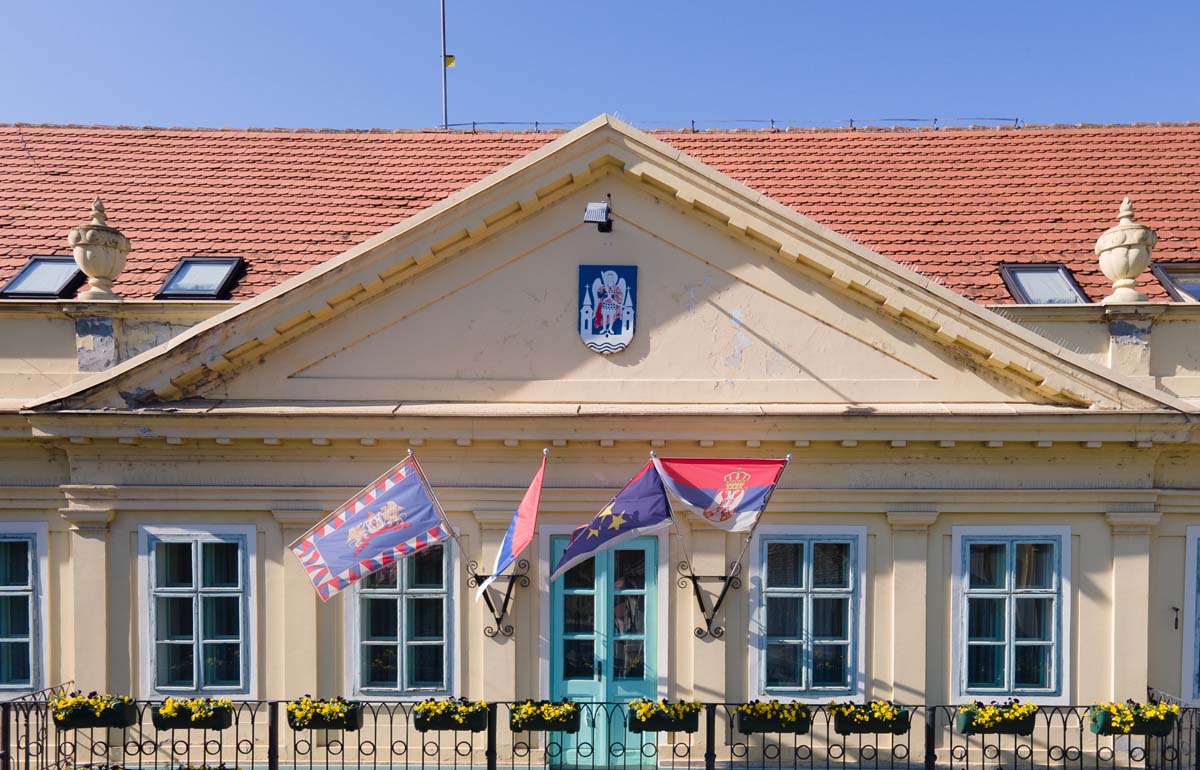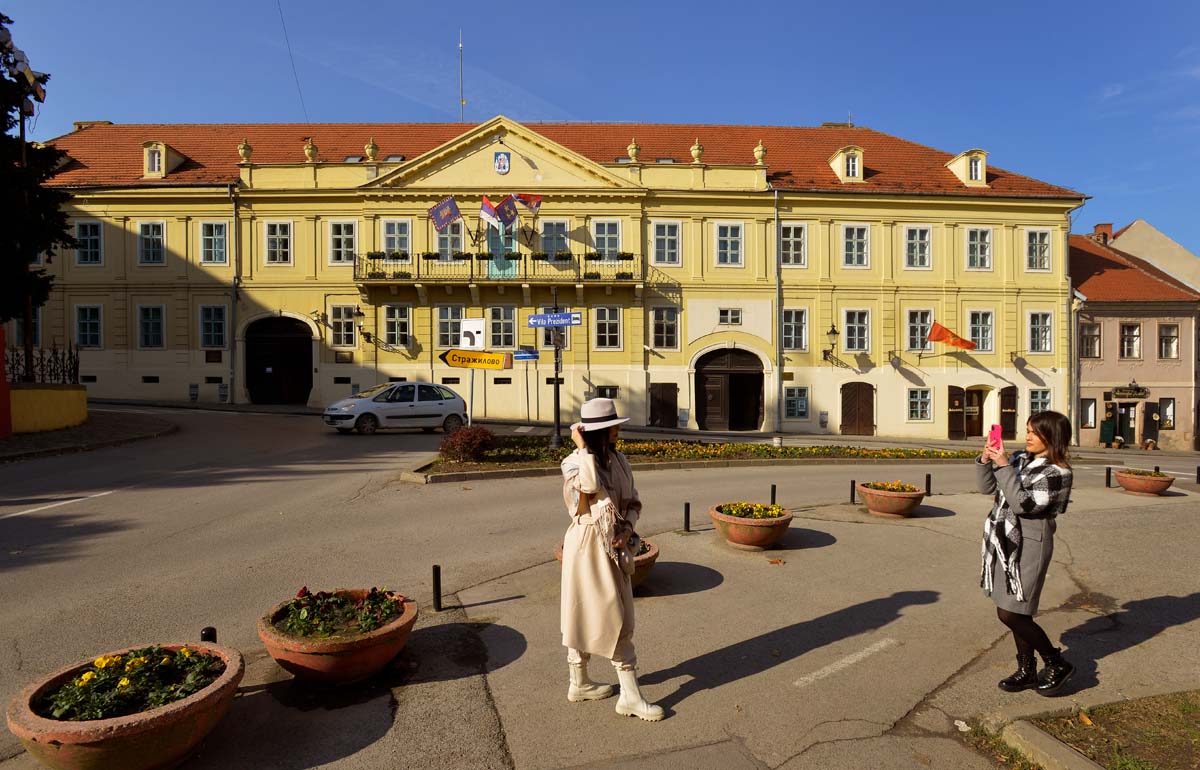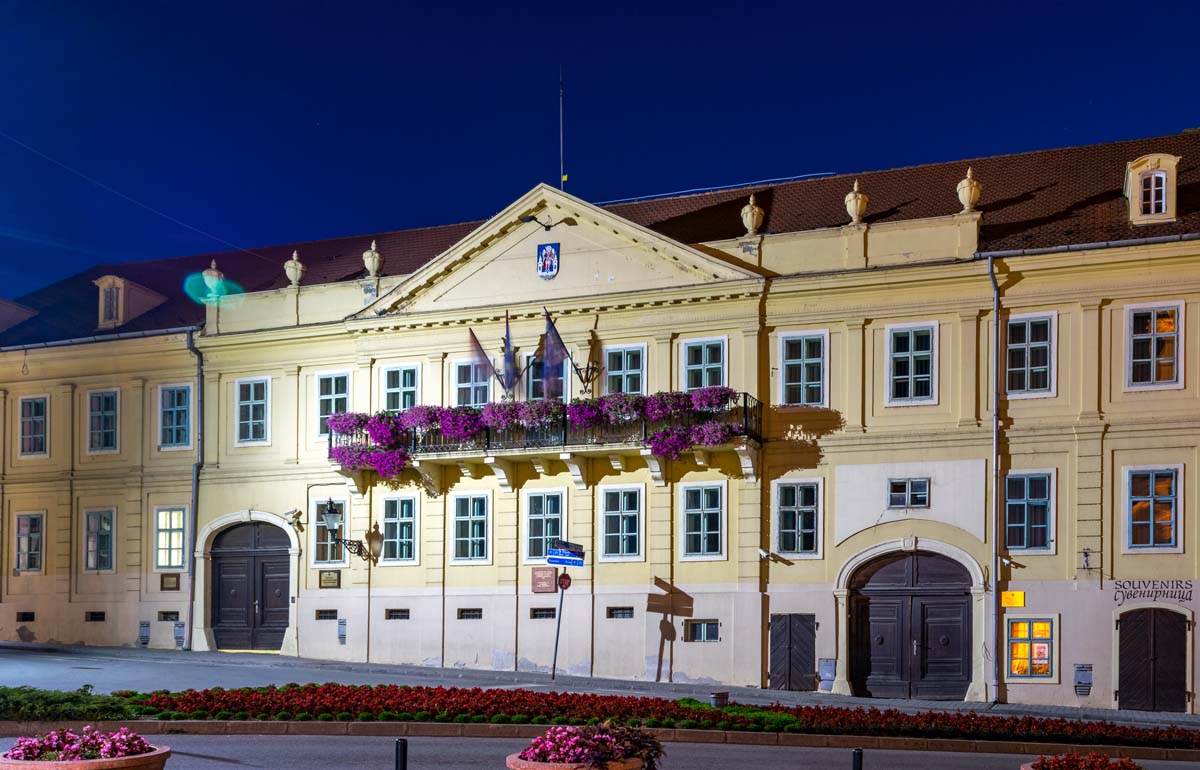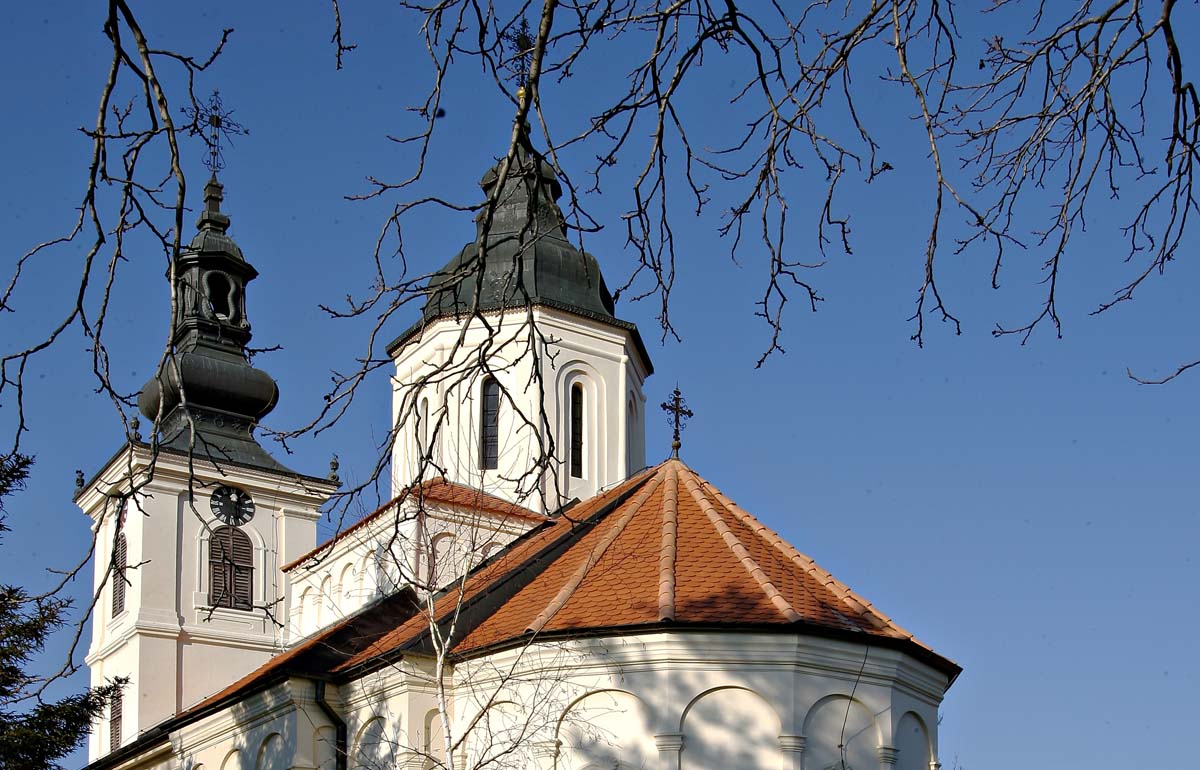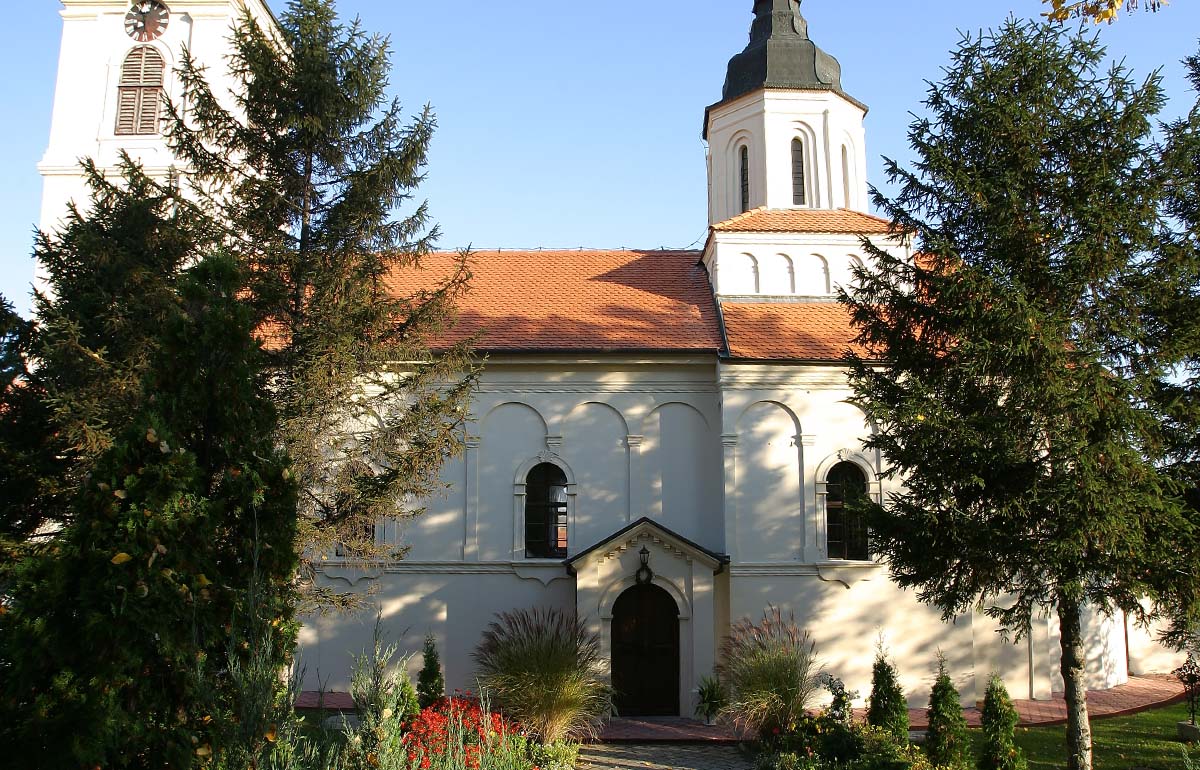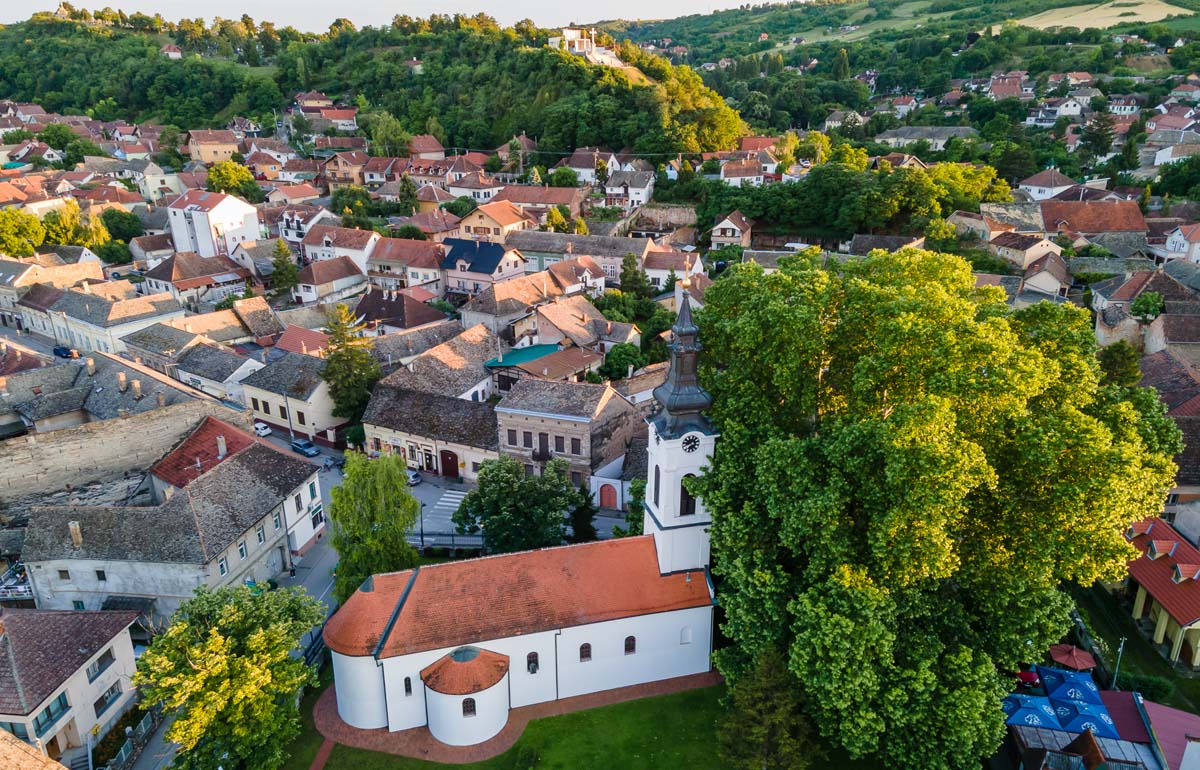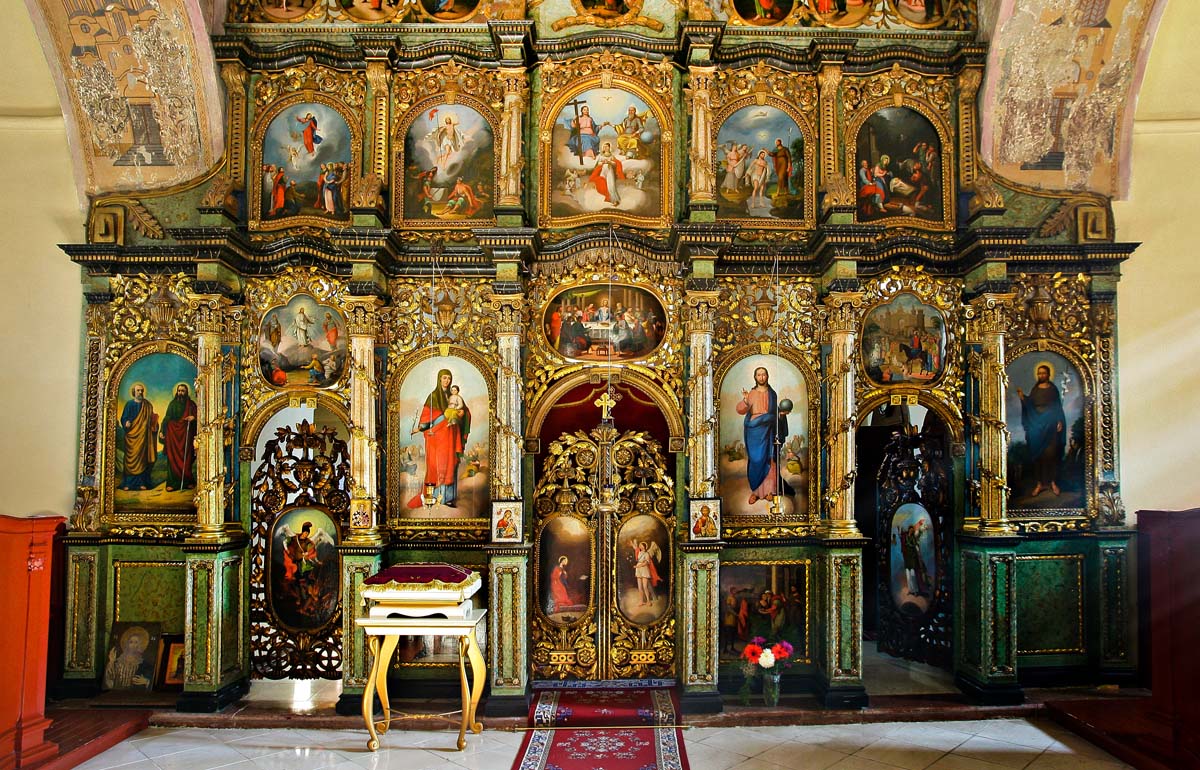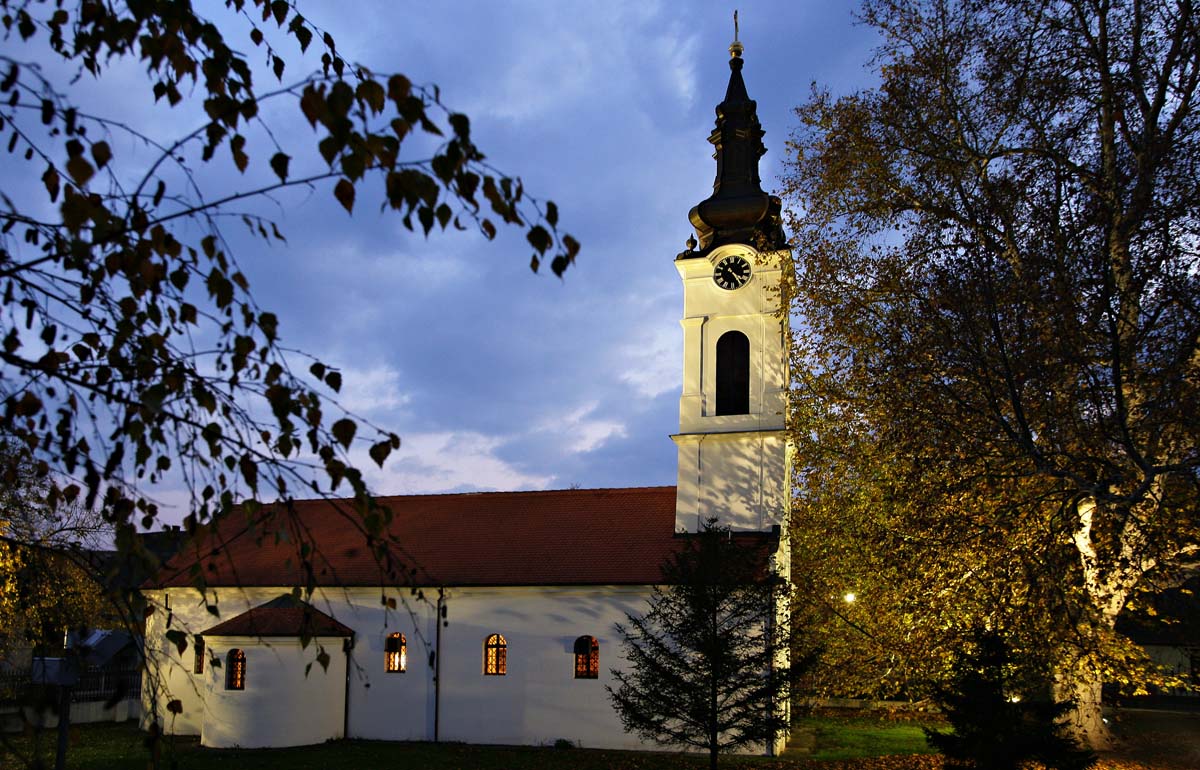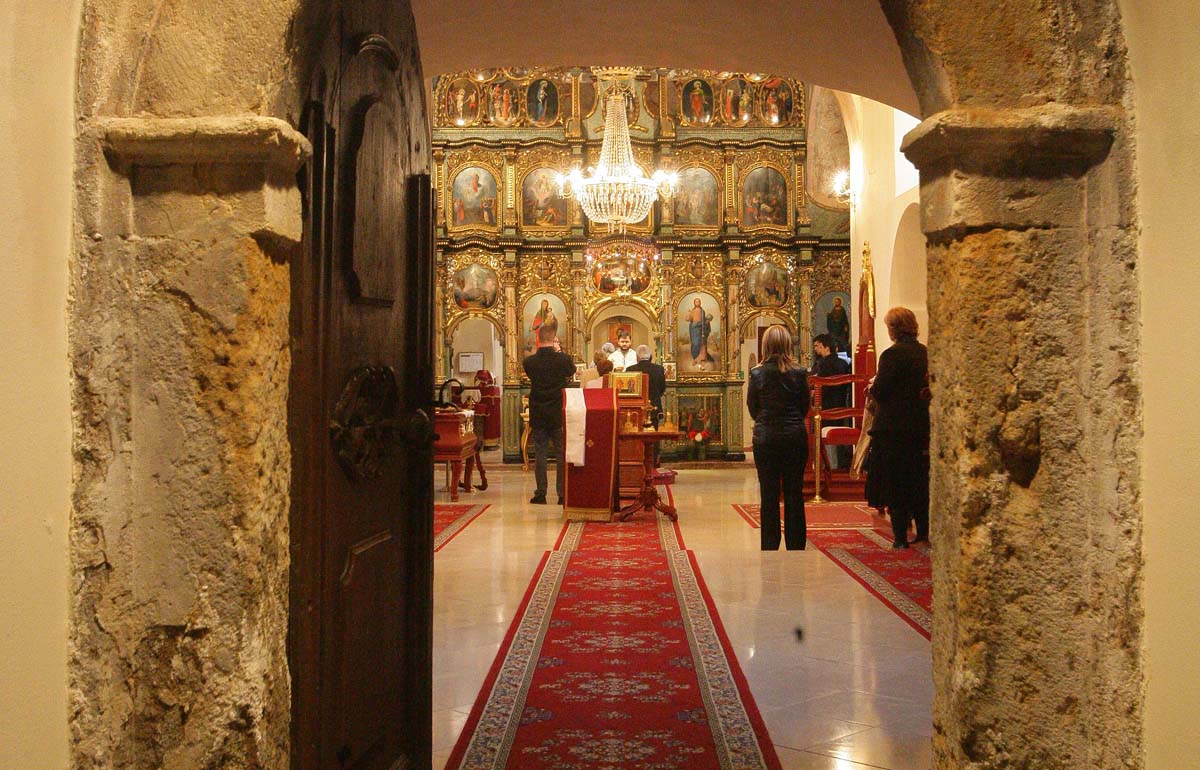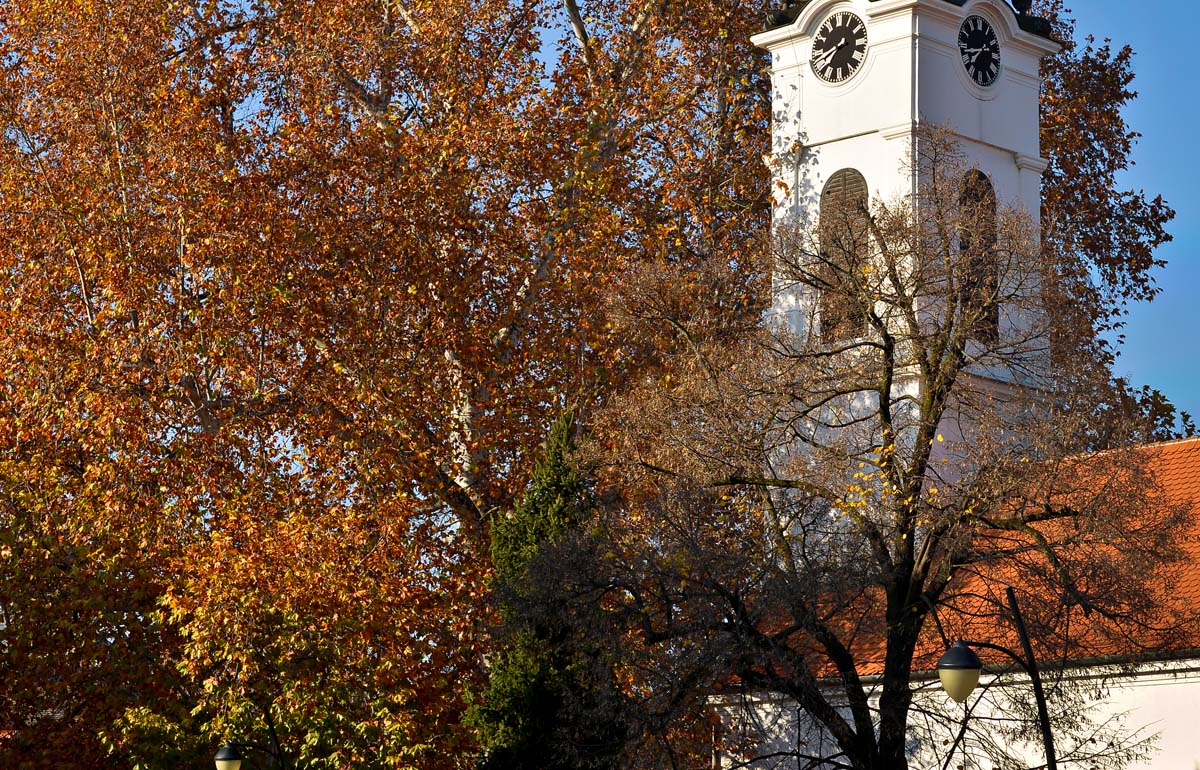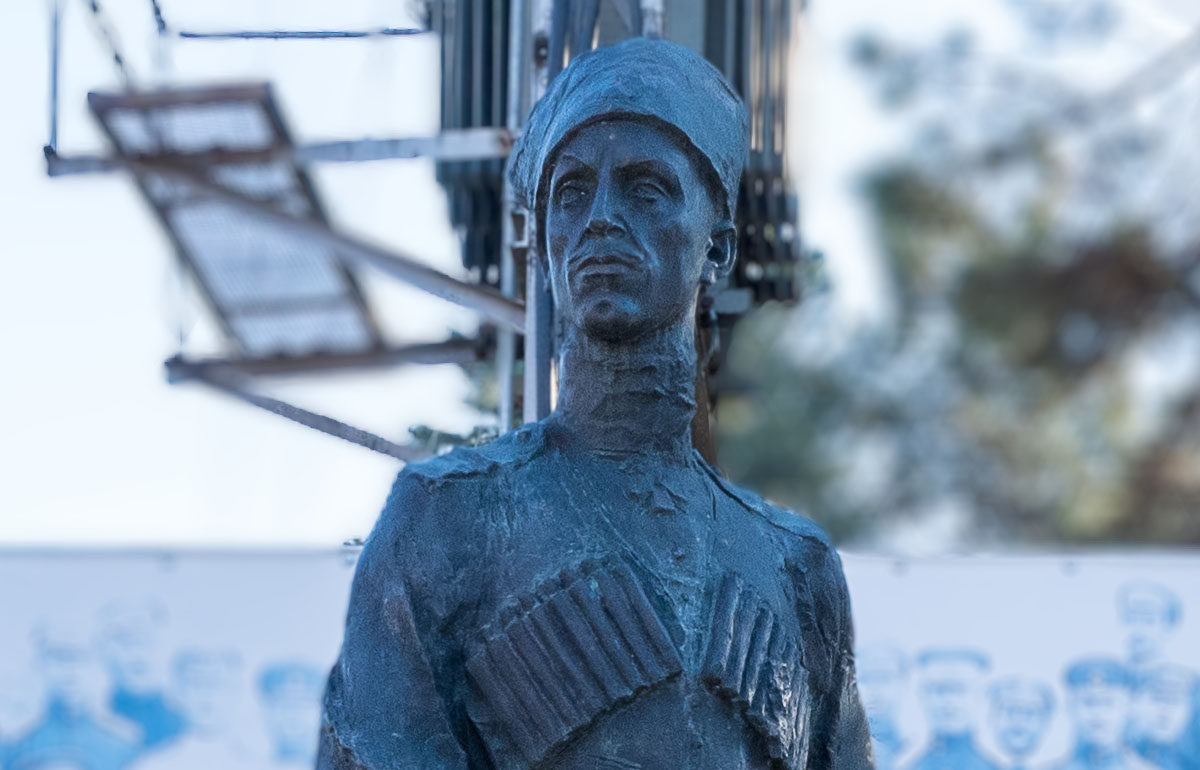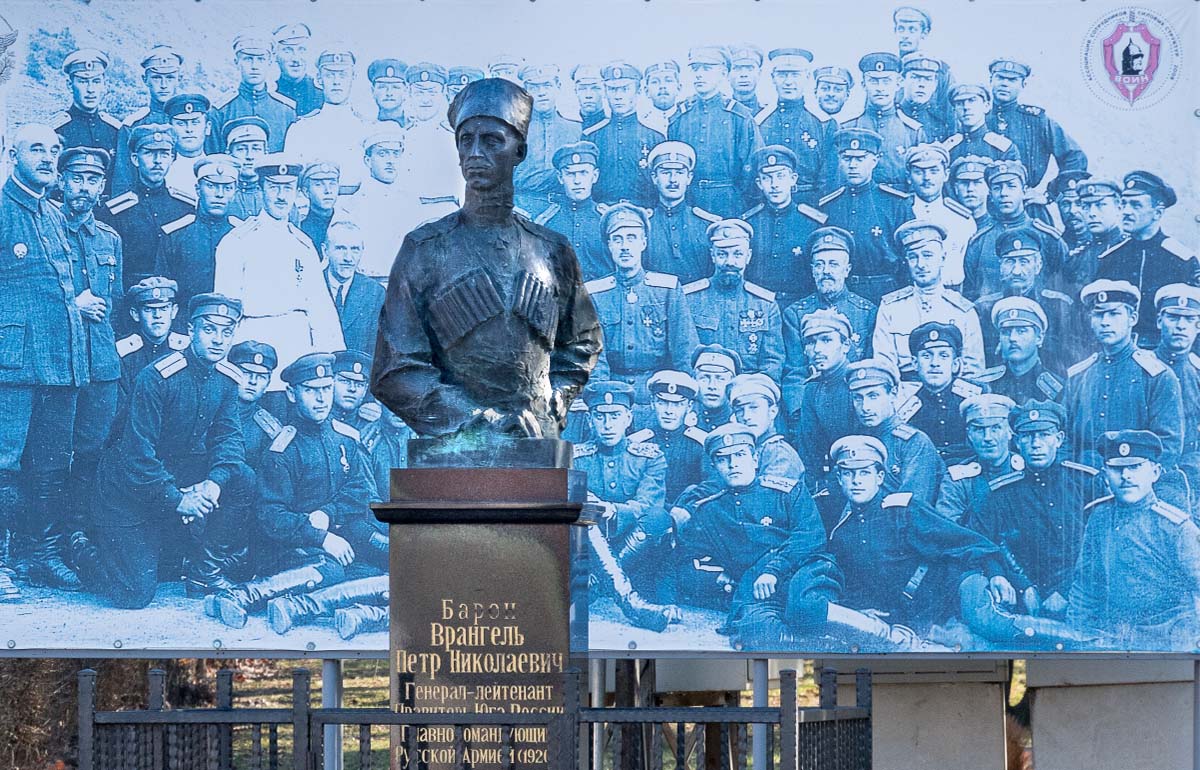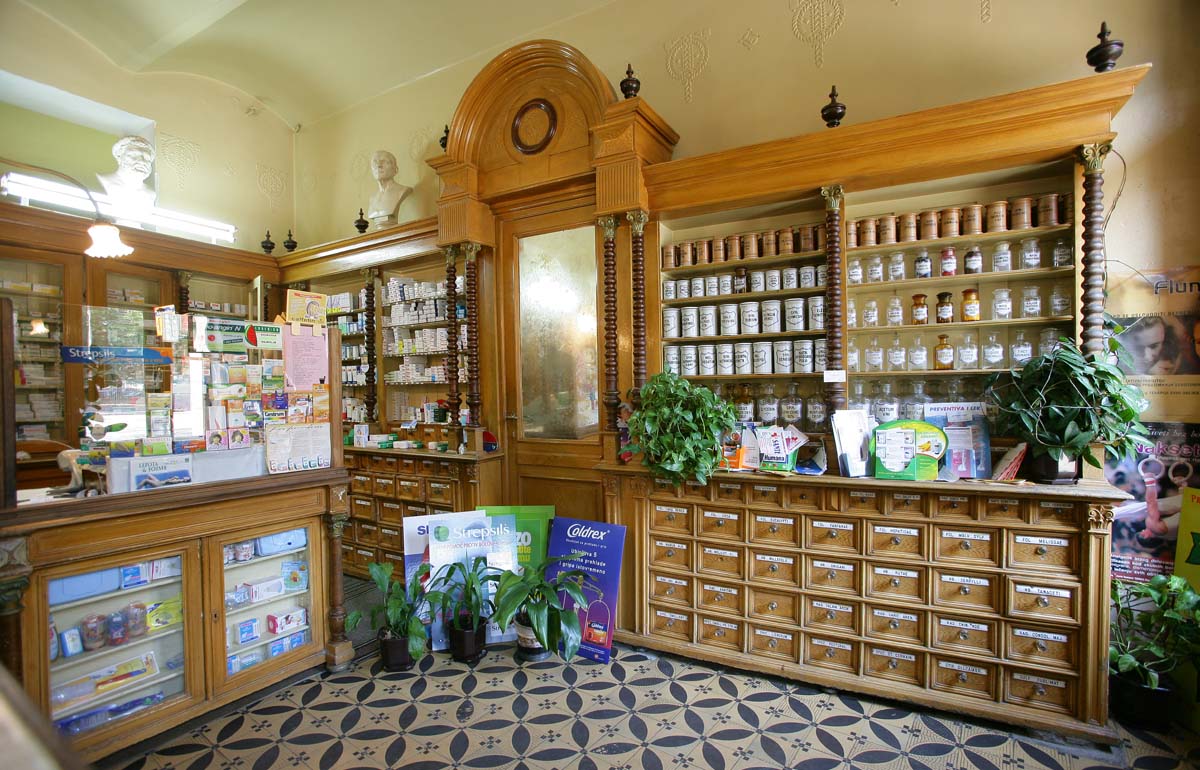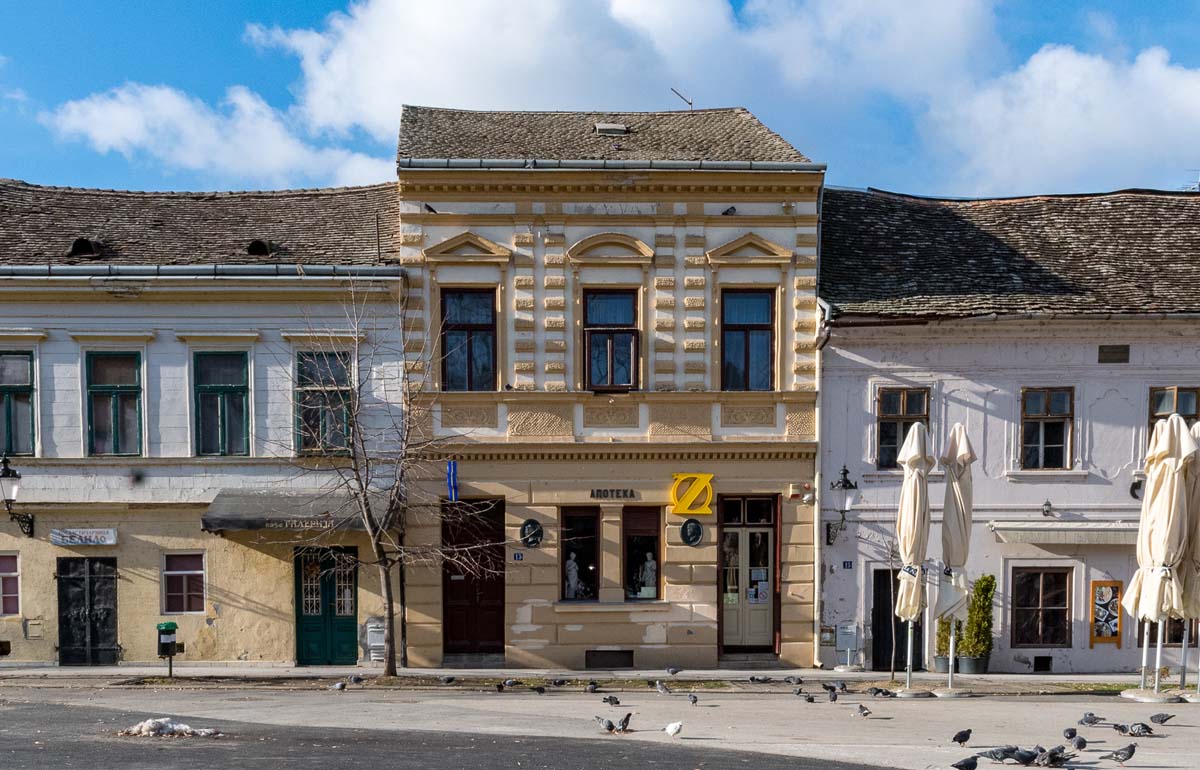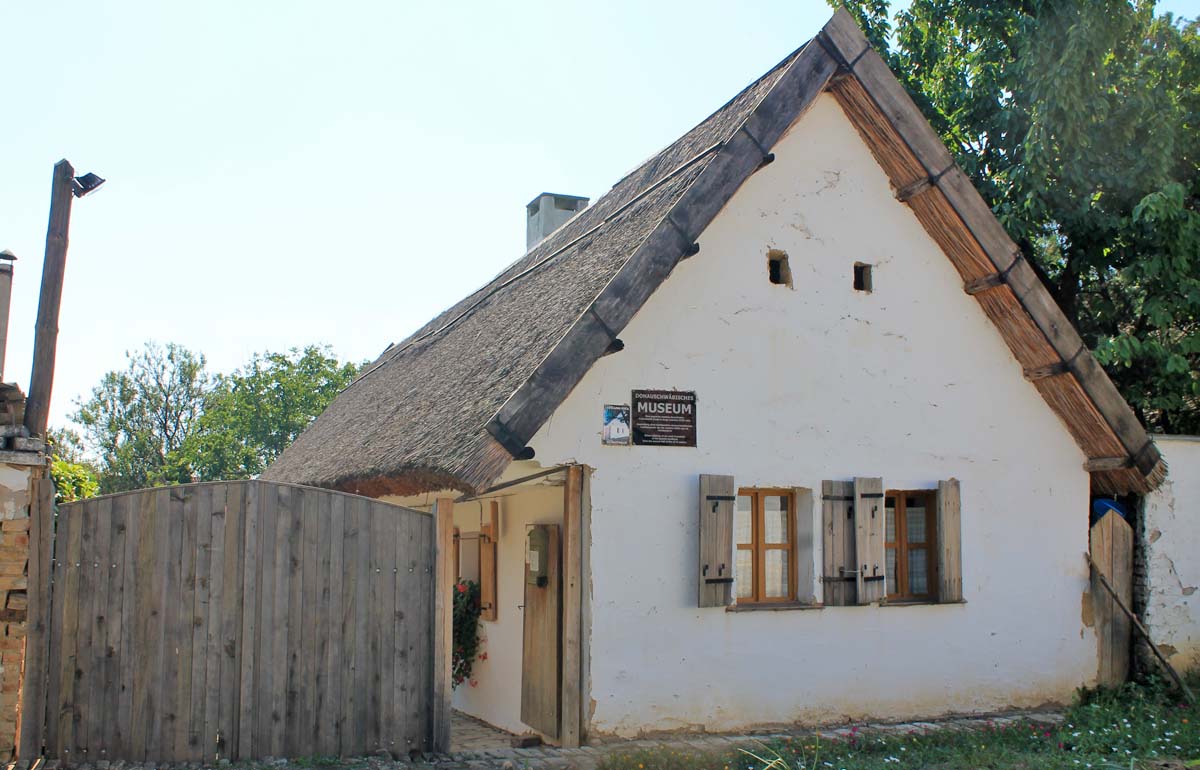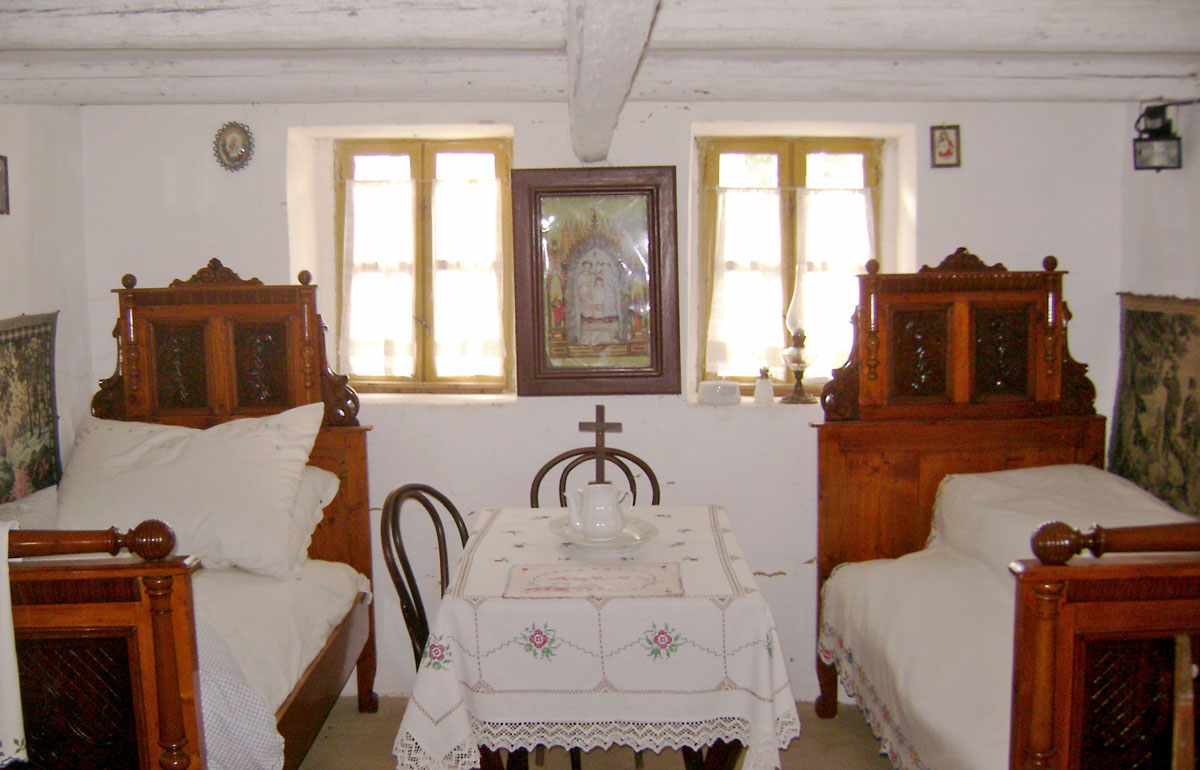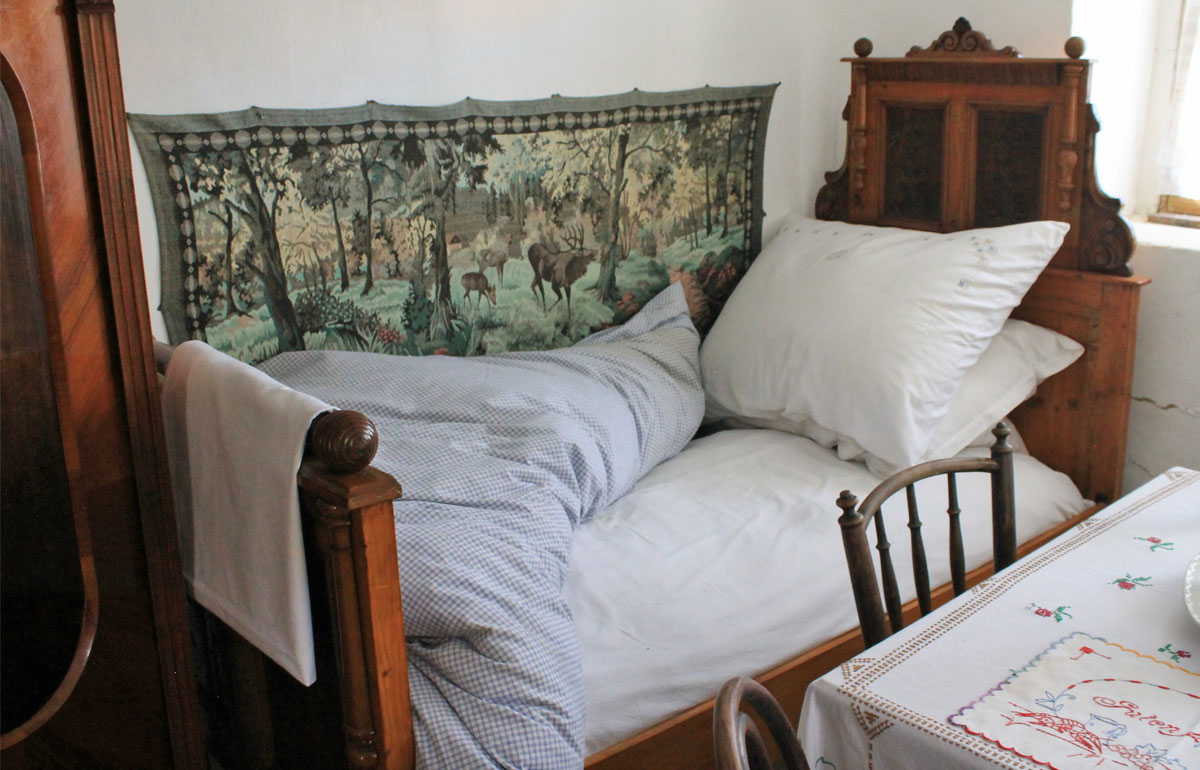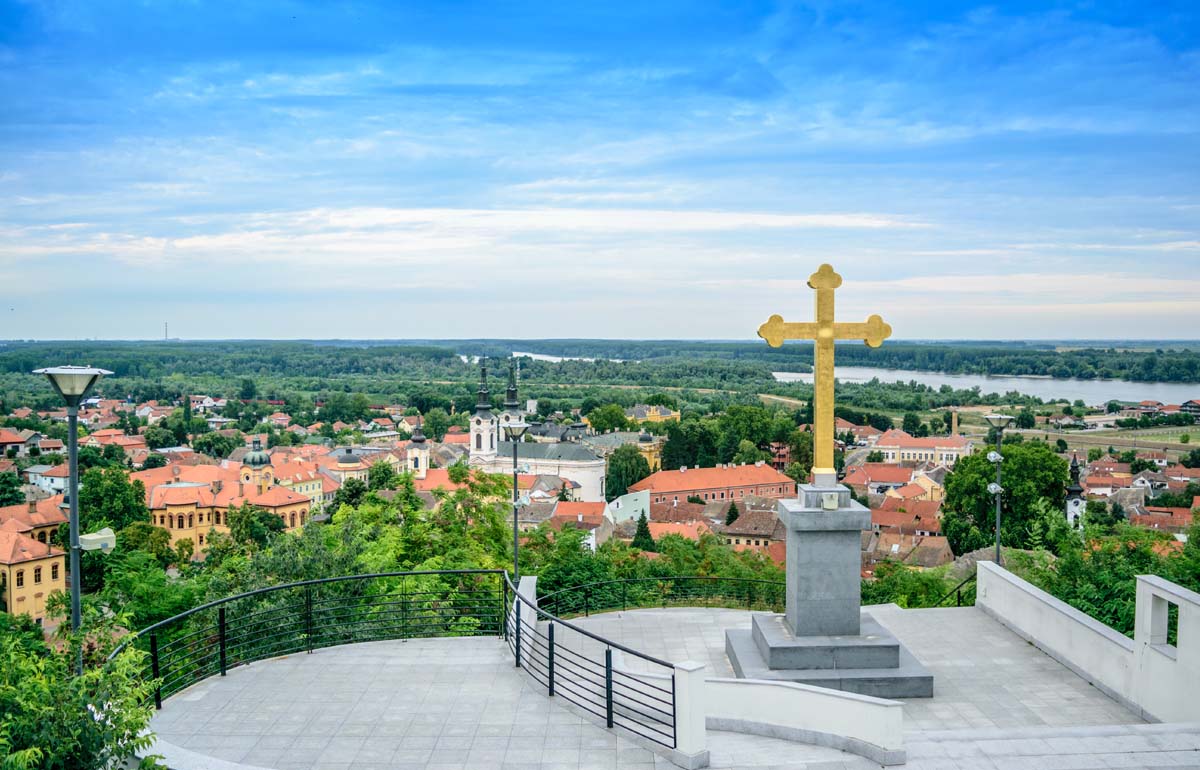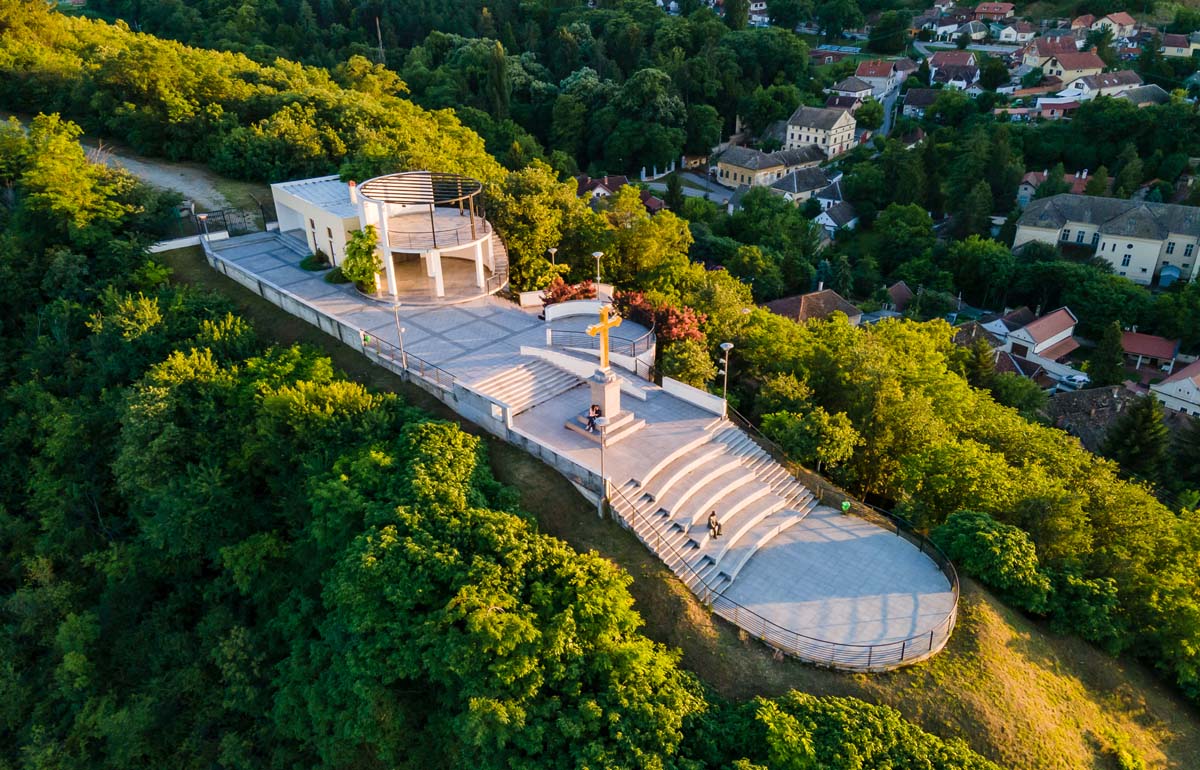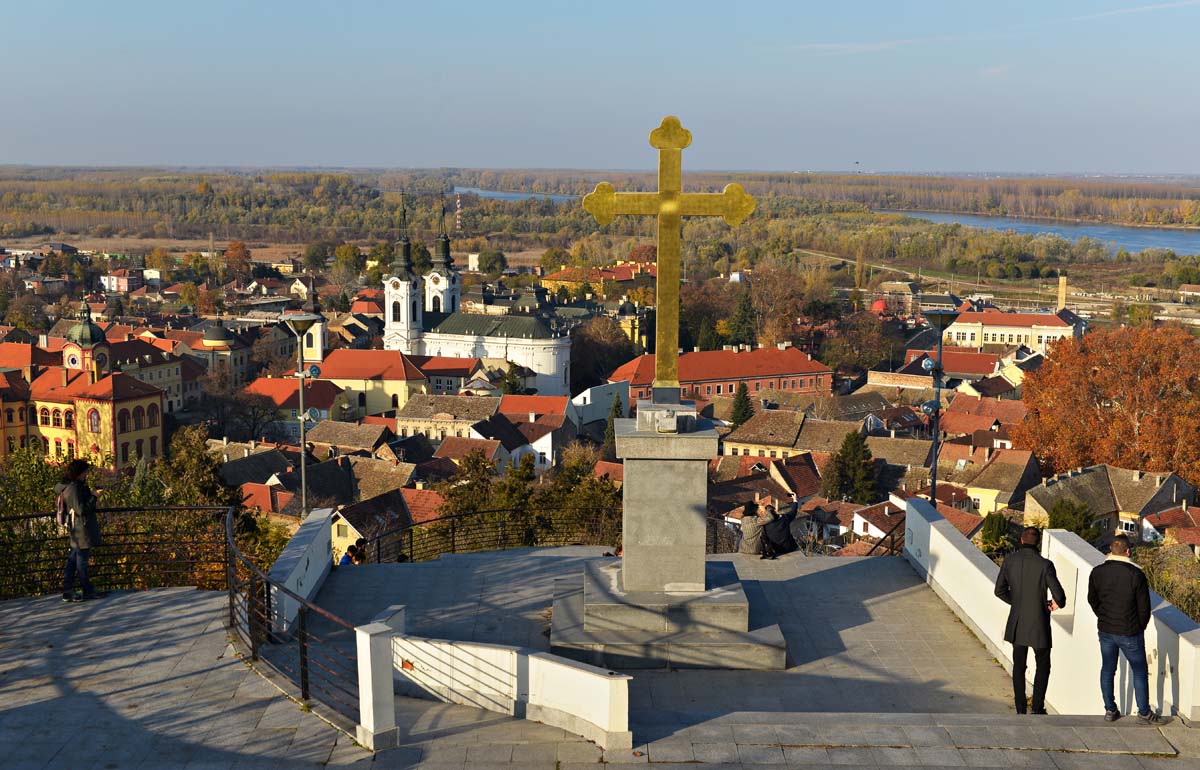The Patriarchal Court is a listed historical building, one of the most impressive edifices of the 19th century in Vojvodina. It boasts a combination of baroque and pseudo-renaissance style. The Court houses the museum of the Serbian Orthodox Church. Today, the Patriarchal Court is the seat of the Bishop of Srem (Syrmia) and has the status of a summer residence of the Serbian Patriarch. The chapel inside the Palace was painted by the celebrated Serbian painter Uroš Predić.
- The number of visitors in one tour is 50
- Taking photographs is allowed
The Orthodox Cathedral, dedicated to St. Nicholas, was erected in 1762. This church is one of the most beautiful examples of 18th-century architecture in Vojvodina. The iconostasis, painted by Teodor Kračun, is regarded a masterpiece of Serbian baroque painting. In the altar section there is the casket with the relics of St. Arsenije Sremac (Arsenius the Syrmian), the second Serbian Archbishop. The church was reconstructed to its present state in 1909-1910.
- The number of visitors in one tour is 50
- Taking photographs is allowed
The Karlovci Philological Grammar School (or Gymnasium) is the oldest Serbian high school, founded in 1791, where many prominent intellectuals of this region were educated. The present building was erected in 1891 as a legacy of the Serbian patriarch German Anđelić and his brother Stevan. Today, the Karlovci Philological Grammar School is a high school where both modern and classical languages are studied, and it has been granted the status of a School of National Importance.
- Visits are by appointment only
- The number of visitors in one tour is 50
- Taking photographs is allowed
The “Four Lions” Fountain is located in the middle of the town square, and was built in 1799 to mark the completion of the first waterworks in Karlovci. In 2007 the fountain was renovated by Prof. Dr. Miodrag Radulovački, an alumnus of the Karlovci Grammar School. Most beautiful photos of many enamored couples have been taken beside this fountain, and legend has it that everyone who takes a sip of water from this fountain will return to Sremski Karlovci one day.
- Taking photographs is allowed
The Clerical High School of St. Arsenije Sremac
The Clerical High School of St. Arsenije Sremac was founded by Metropolitan Stefan Stratimirović in 1794. The building in which the school is housed today was erected by Patriarch Georgije Branković, for the needs of the Church and Common Funds in 1900. The Archive of SANU, a branch of the Serbian Academy of Sciences and Arts, is to be found in the same building. This school educates young Orthodox theologians from all over the world.
- Visits are by appointment only
- The number of visitors in one tour is 50
- Taking photographs is allowed
The Chapel of Peace
The Chapel of Peace was built in 1817 on the location where the famous Karlovci Peace Treaty was concluded (1699) between the forces of the Christian Alliance and Turkey. This is where, for the first time in official world diplomacy, a round table was used for political negotiations. Upon the resolution of the Vienna War Council, the original conference hall built of wood was replaced by the present-time chapel. It has been renovated, and occasionally, on important religious holidays, masses are held there.
- Visits are by appointment only
- The number of visitors in one tour is 50
- Taking photographs is allowed
- Souvenirs are available
The Memorial of Branko Radičević
The Memorial of Branko Radičević was erected in 1885 to honour the great Romantic poet who died an untimely death. This is the spot where his remains were laid to rest after being relocated from Vienna. Branko was educated at the Karlovci Grammar School, and dedicated some of his finest poems to Sremski Karlovci. The pyramid-shaped memorial was made of stone blocks brought from different regions inhabited by Serbs. It was restored in 2011, thanks to Prof. Dr. Miodrag Radulovački.
- Taking photographs is allowed
The Roman Catholic Church
The Roman Catholic Church dedicated to the Holy Trinity was built in 1768, in baroque style. The portal of the church is one of the finest examples of baroque art in the region. It was erected on the site of a former Benedictine basilica. The church has been restored and expanded several times through its history.
- Visits are by appointment only
- The number of visitors is not limited
- Taking photographs in the exterior is allowed
The City Hall
The City Hall was built between 1808 and 1811 in neoclassical style. The most significant event related to this building took place in May 1848, when Serbian Vojvodina (Dutchy) was proclaimed from its balcony. During its history the City Hall has served different purposes, one of them being even a prison. Presently, this building is the seat of the Municipal Government of Sremski Karlovci.
- Taking photographs in the exterior is allowed
The Monastery of the Presentation of the Holy Virgin (Upper Church)
The Monastery of the Presentation of the Holy Virgin (Upper Church) was built in 1746 on the foundations of an older church from the 16th century. Several priests and prominent citizens of Karlovci were buried in the churchyard, while Serbian patriarchs Georgije Branković and Lukijan Bogdanović rest in the crypt of the temple.
- Open for visits
- The number of visitors is not limited
- Taking photographs in the exterior is allowed
- Souvenirs are available
The Lower Church
The Lower Church is dedicated to the holy apostles Peter and Paul. It was first mentioned in a manuscript dating from 1599, and in 1719 the church was restored on its old foundations. At the altar of this church, on October 13, 1784, Petar I Petrović Njegoš, later St. Peter of Cetinje, was consecrated. Subsequent to the construction of the temple, a platanus tree was planted in the churchyard, still surviving and under state protection. It represents a natural monument, and the numerous visitors stand in awe under its magnificent canopy.
- Open for visits
- The number of visitors is not limited
- Taking photographs in the exterior is allowed
- Souvenirs are available
The Monument to Wrangel
The Monument to Wrangel is the first monument to Russian emigration in the world. Erected in 2007, it is dedicated to the General of the Russian Imperial Army Pyotr Nikolayevich Wrangel. The monument was sculpted by the Russian sculptor Vasily Azemsha.
- Taking photographs in the exterior is allowed
The Old Pharmacy
The Old Pharmacy is one of the oldest pharmacies in Vojvodina, built in 1890 and is still operating. Founded by Ludvig Straser, it has a distinctive interior, with furniture manufactured upon order in Venice, and reflects late 19th-century ambience.
- Open for visits
- The number of visitors is not limited
- Taking photographs is allowed
The Heritage Museum
The Heritage Museum is an ethnological display of the rural household of the Danube Swabians from the second half of the 18th century. It is located in the part of Sremski Karlovci where they settled in 1739. The museum presents exhibits to depict the way of life of the Danube Swabians 250 years ago.
- Visits are by appointment only
- The number of visitors in one tour is 50
- Taking photographs is allowed
- Souvenirs are available
Panoramic Spot (Vidikovac)
Panoramic Spot (Vidikovac) on the hilltop is a place offering a full view of Sremski Karlovci, its rooftops, the Danube flowing below, and the vast plain of Bačka. The most important part of the spot is a two-level open-air stage. A tall gilded cross dominates one level, as well as a sculpture of the poet Duško Trifunović, who spent the last years of his life in Sremski Karlovci and was buried there in the Čerat cemetery.
- Open for visits in the tourist season
- The tourist season lasts from April 1st to October 31st
- Taking photographs is allowed


